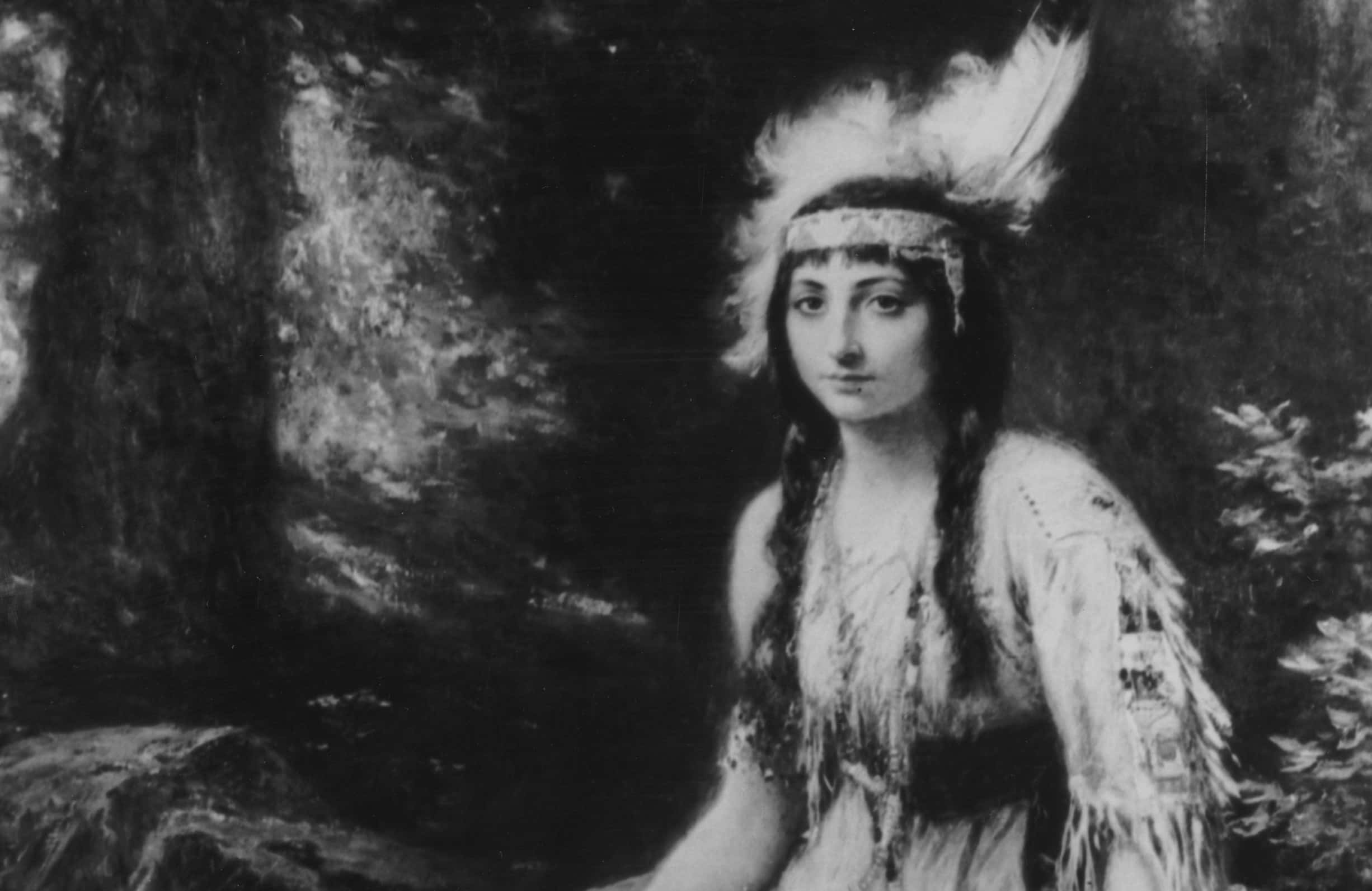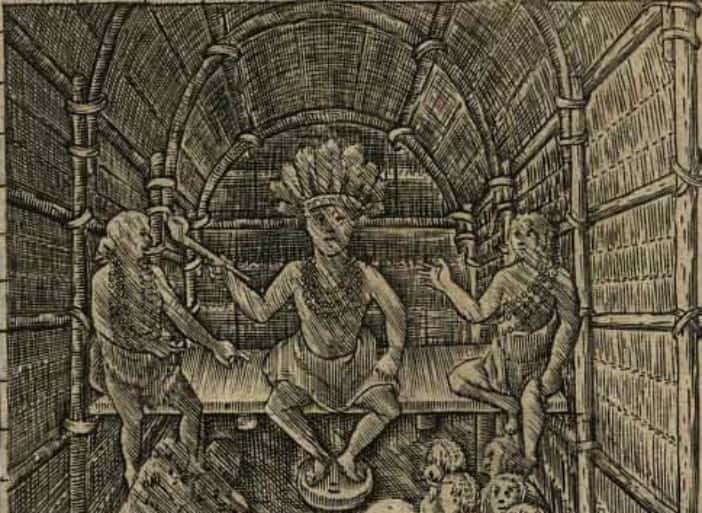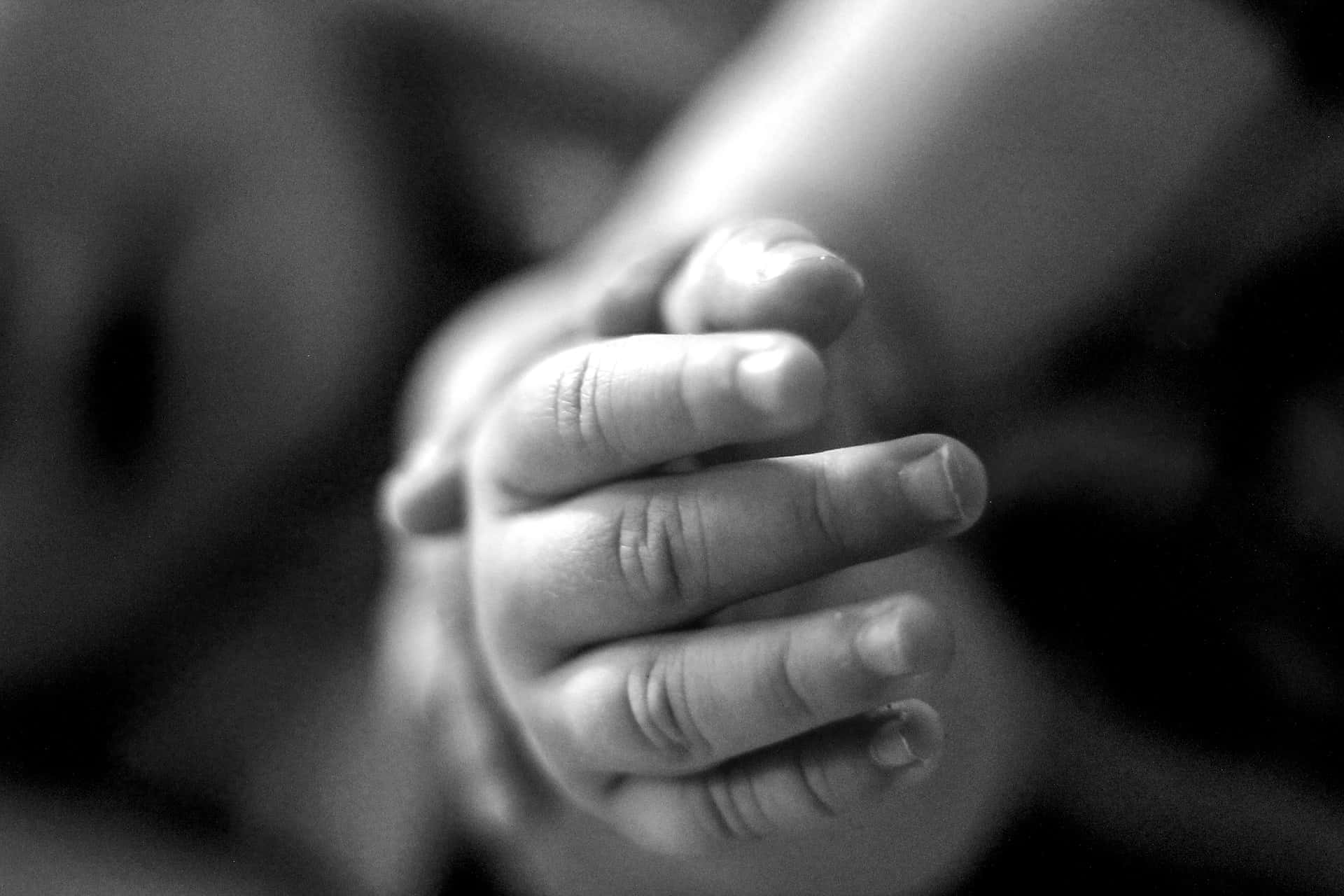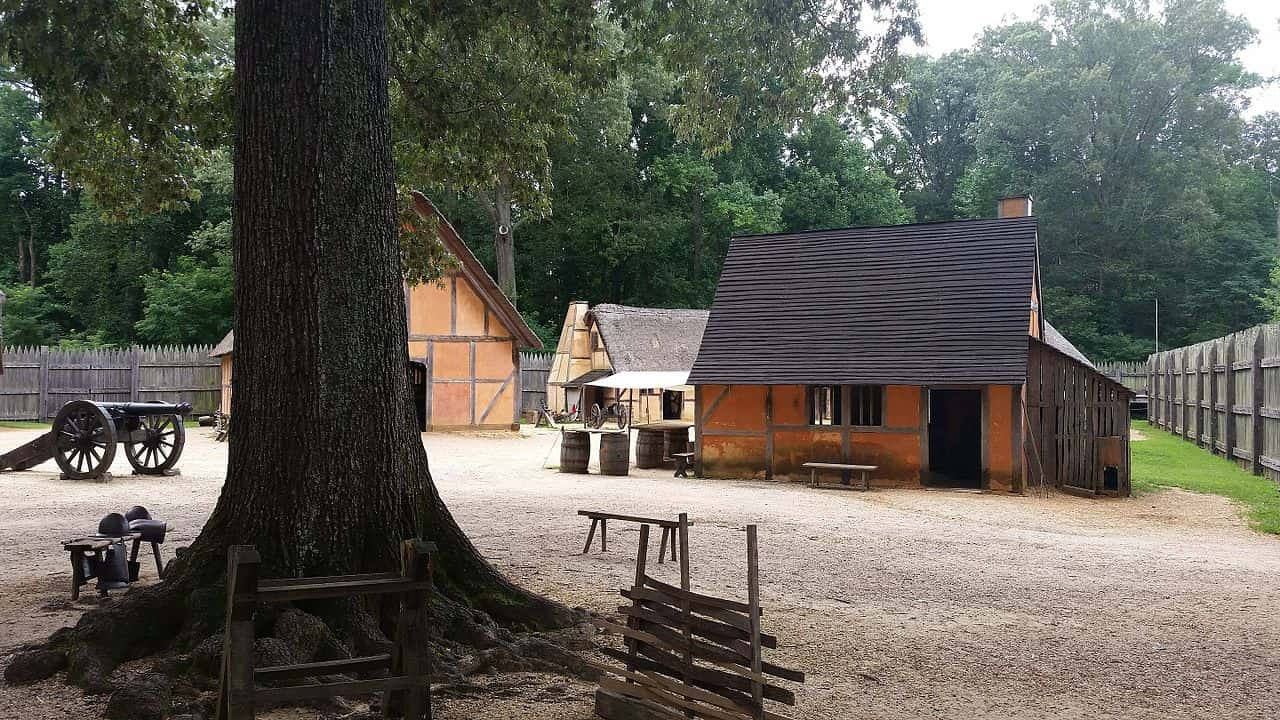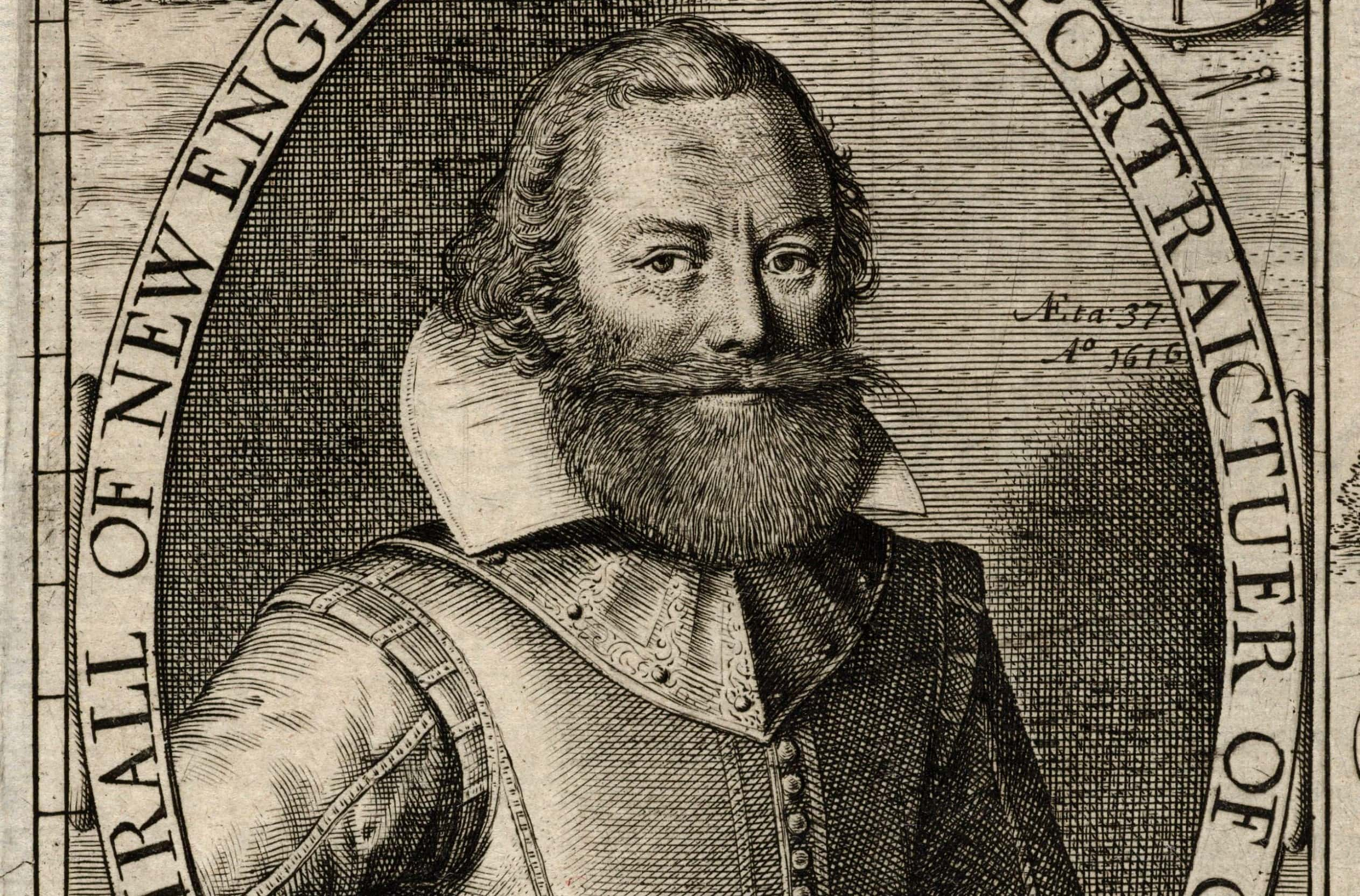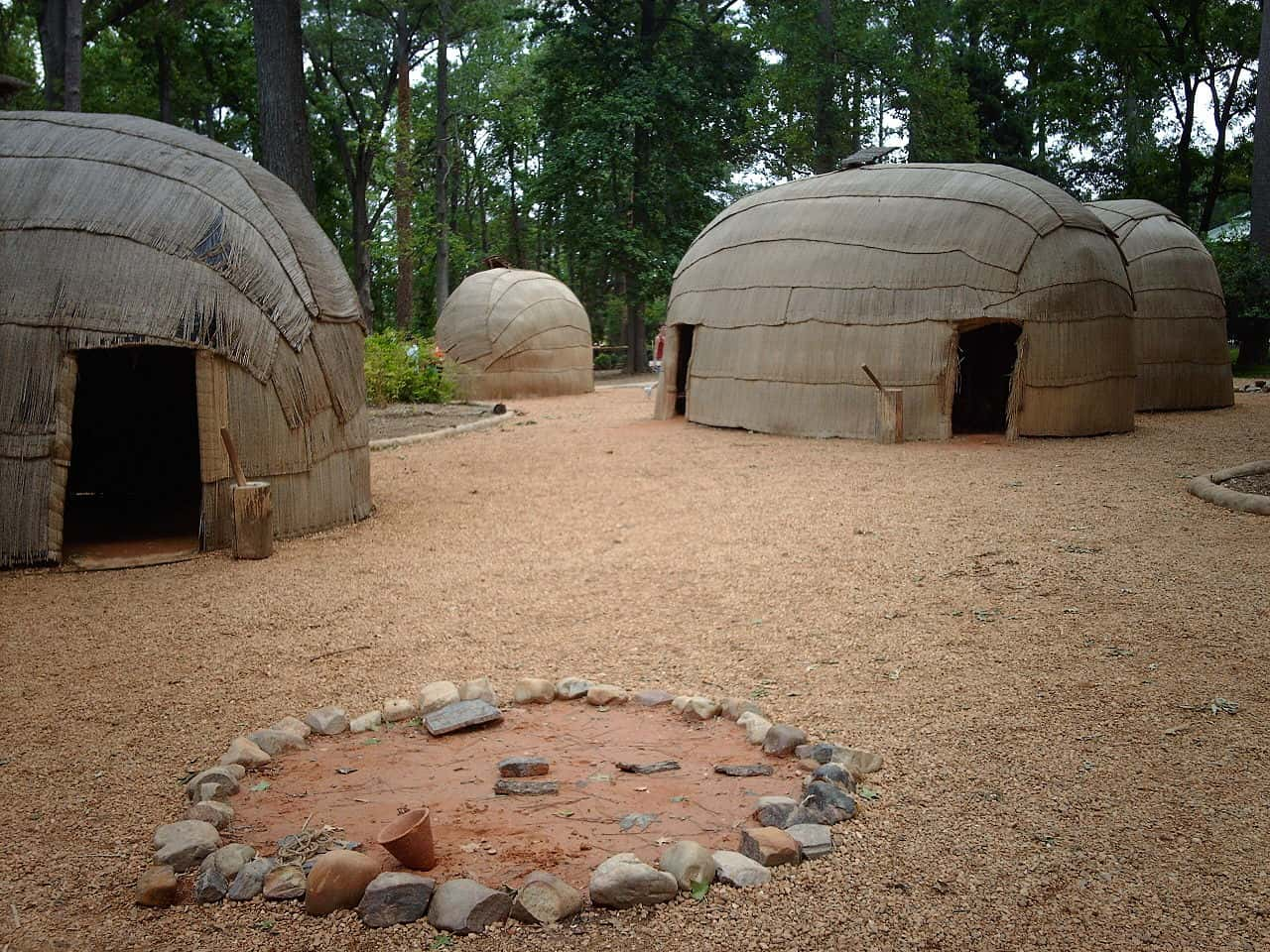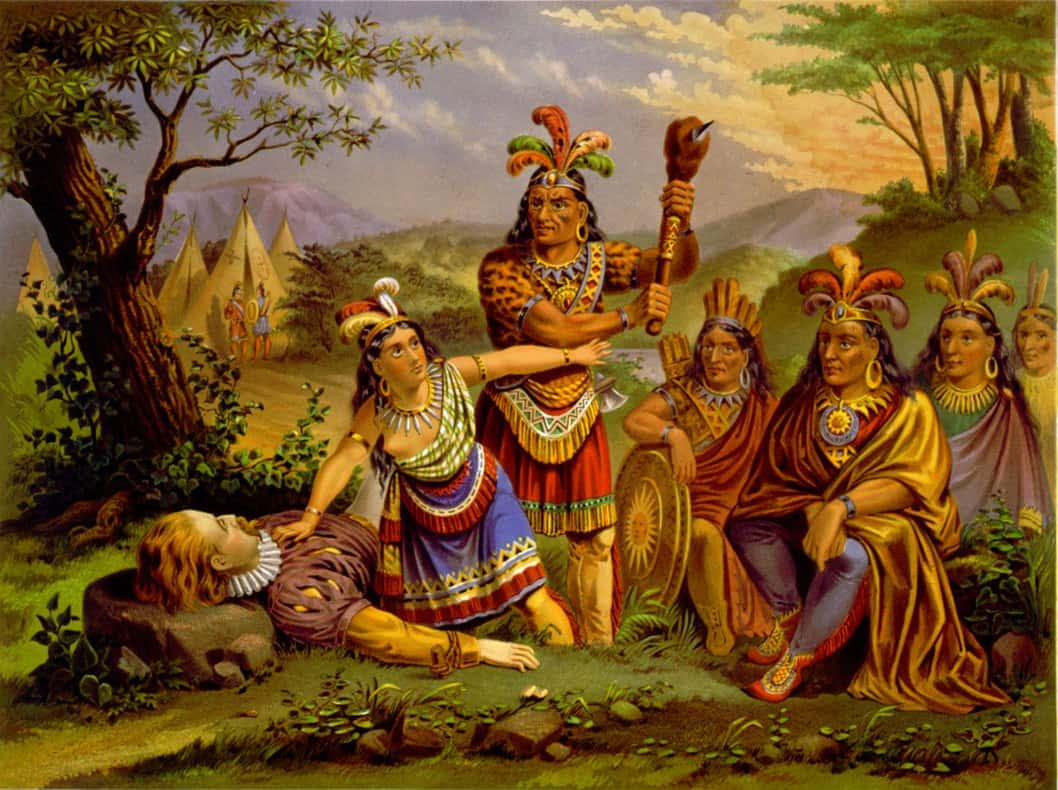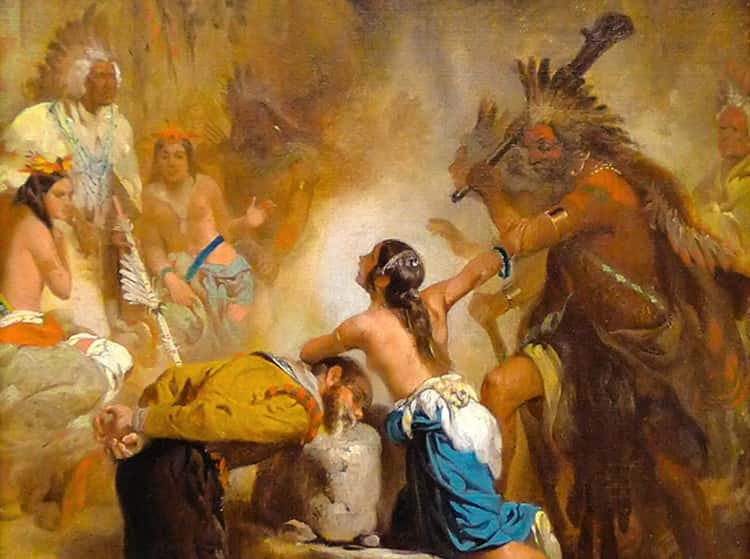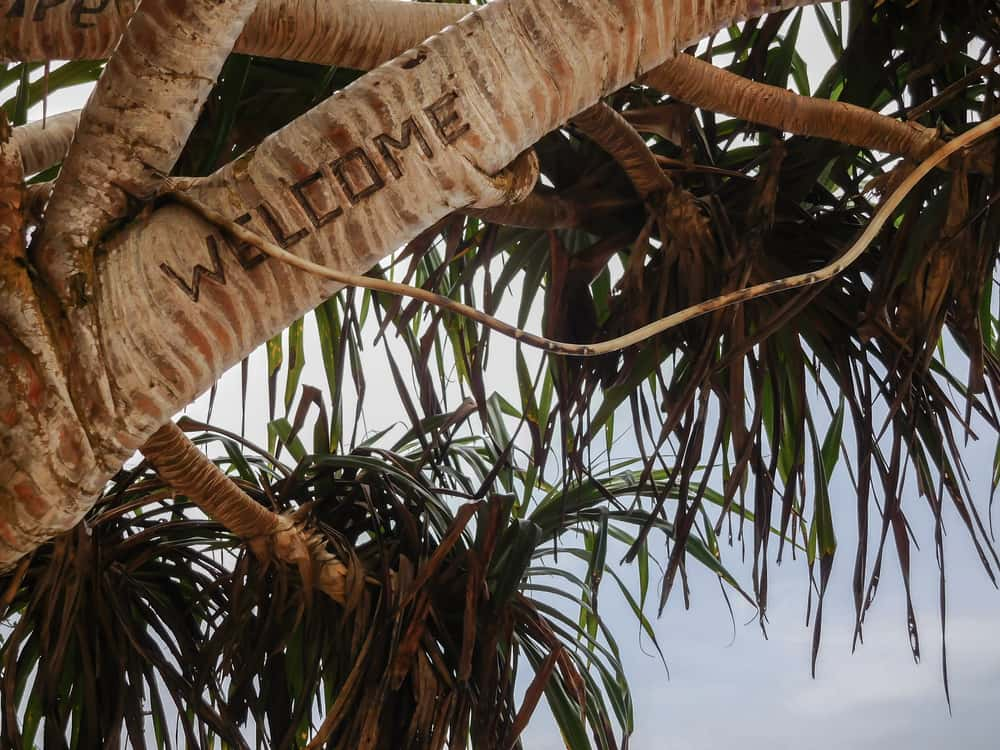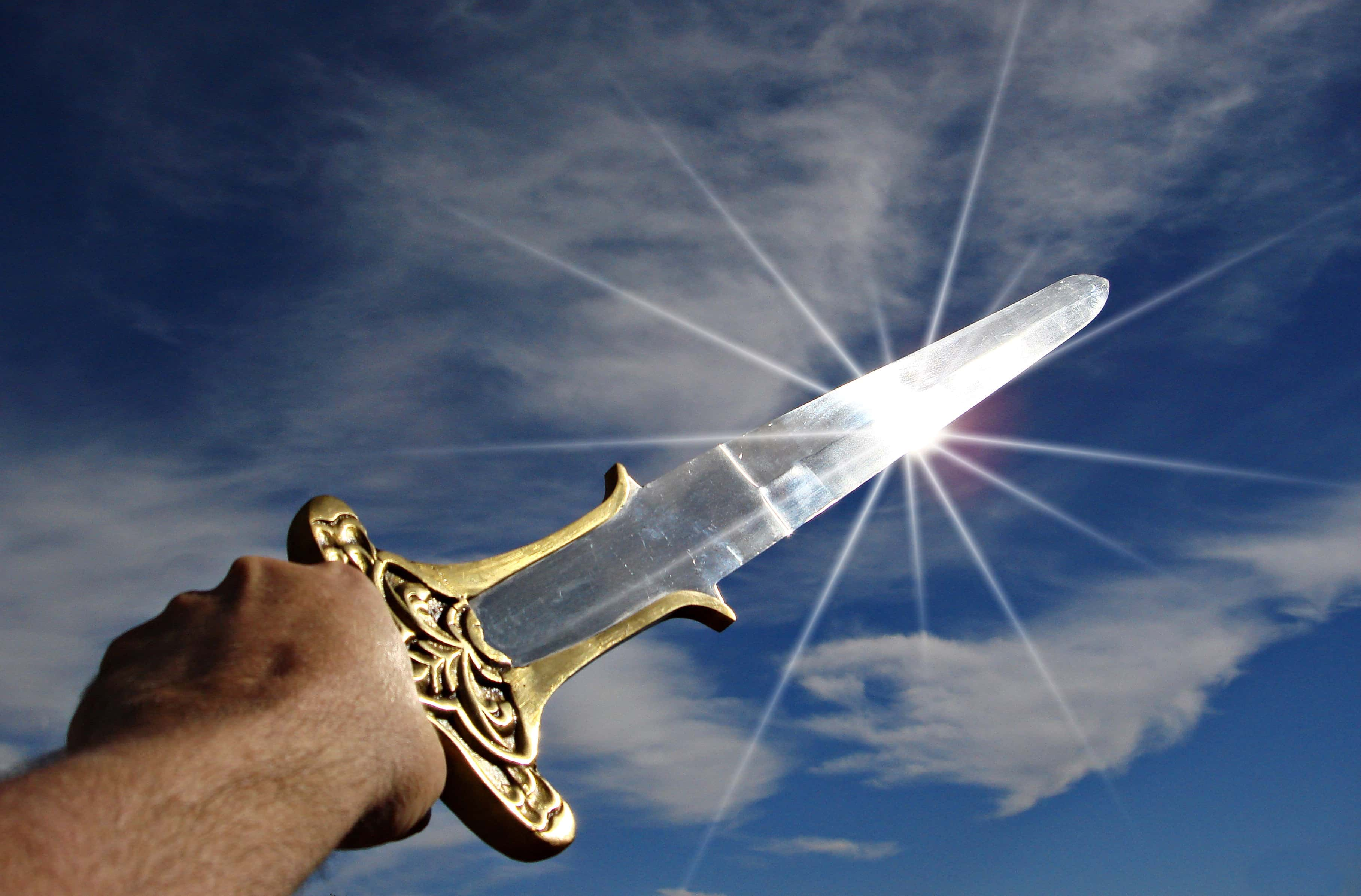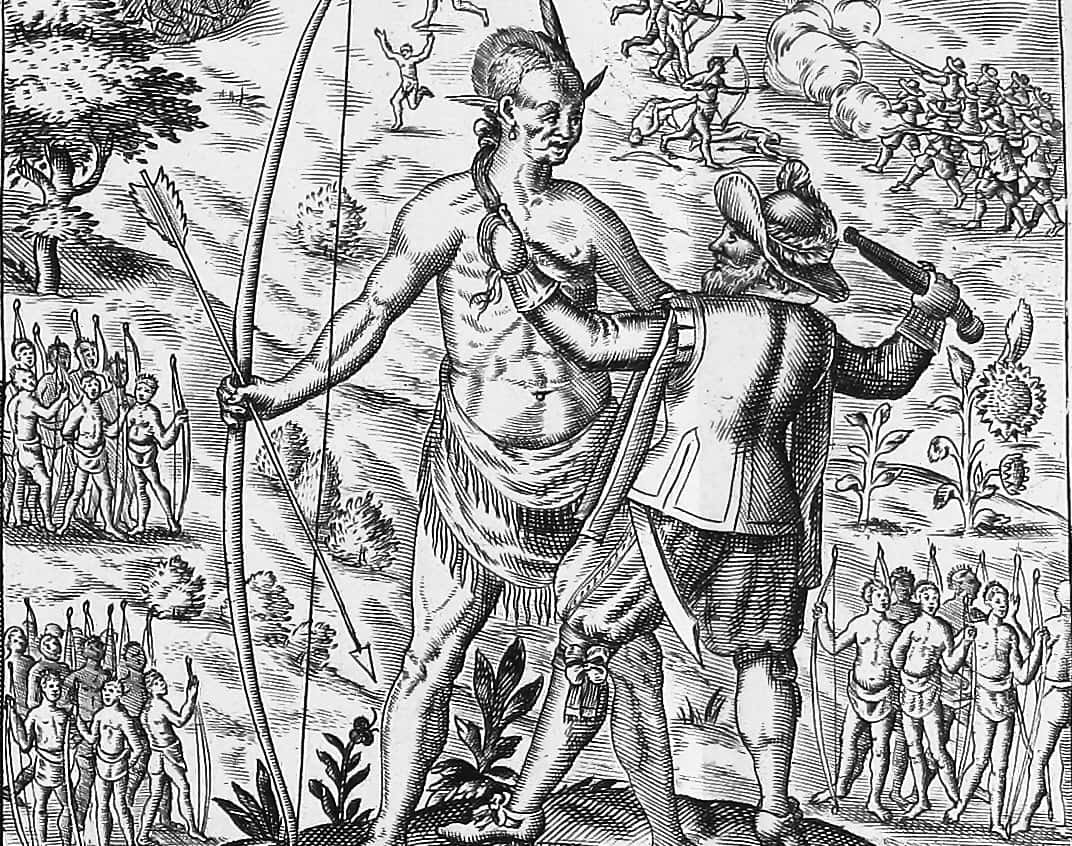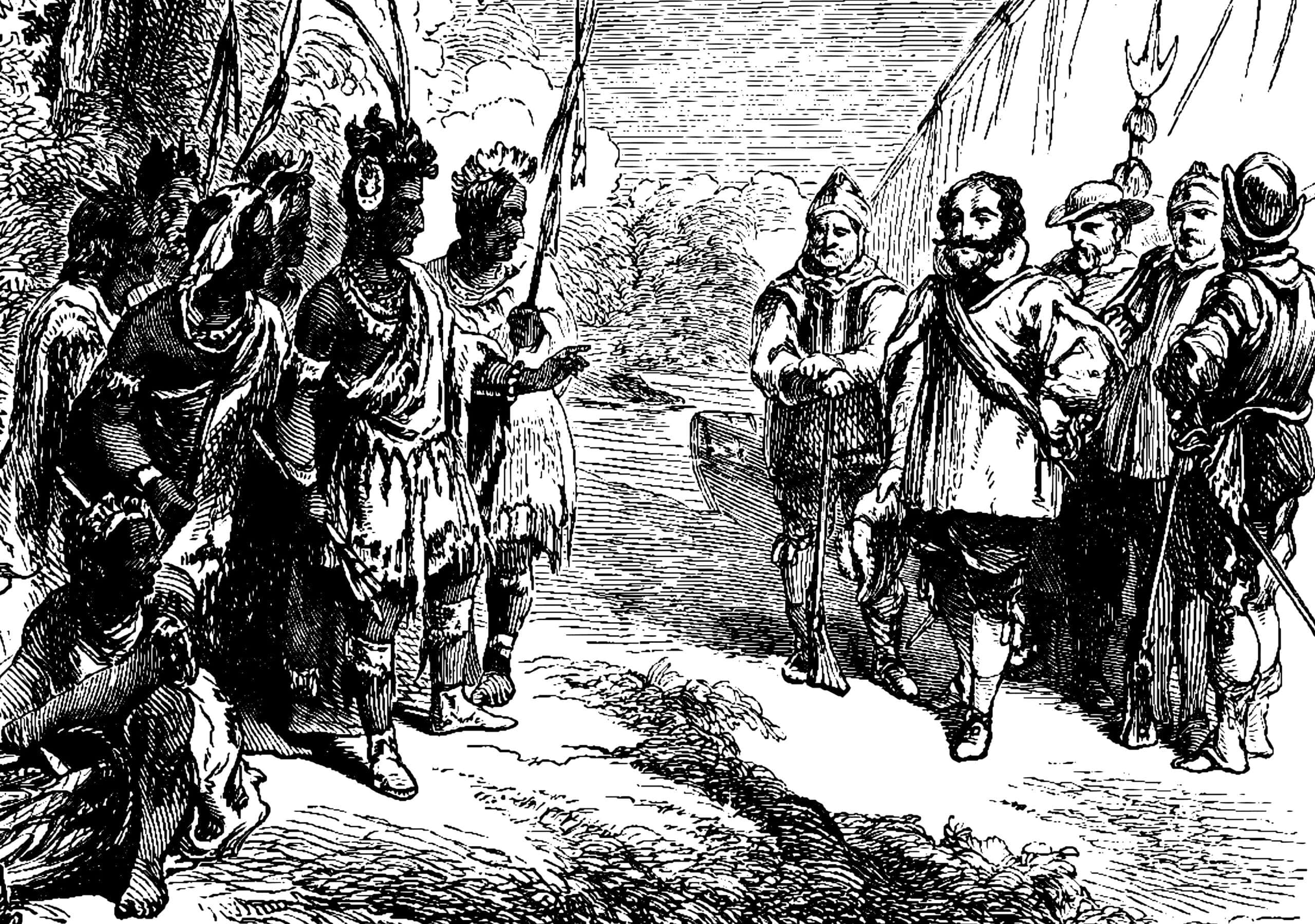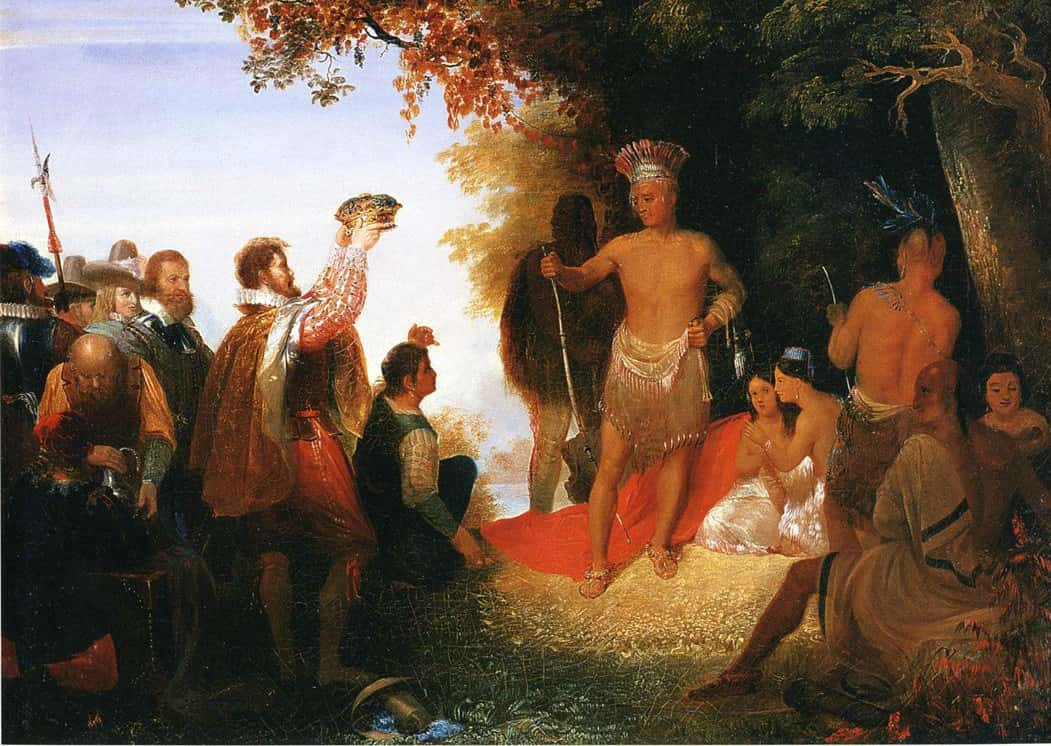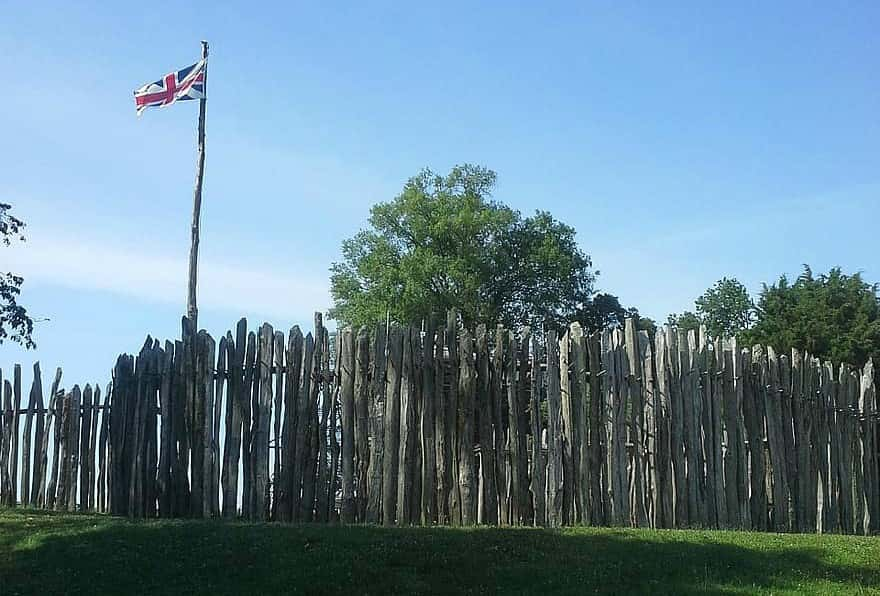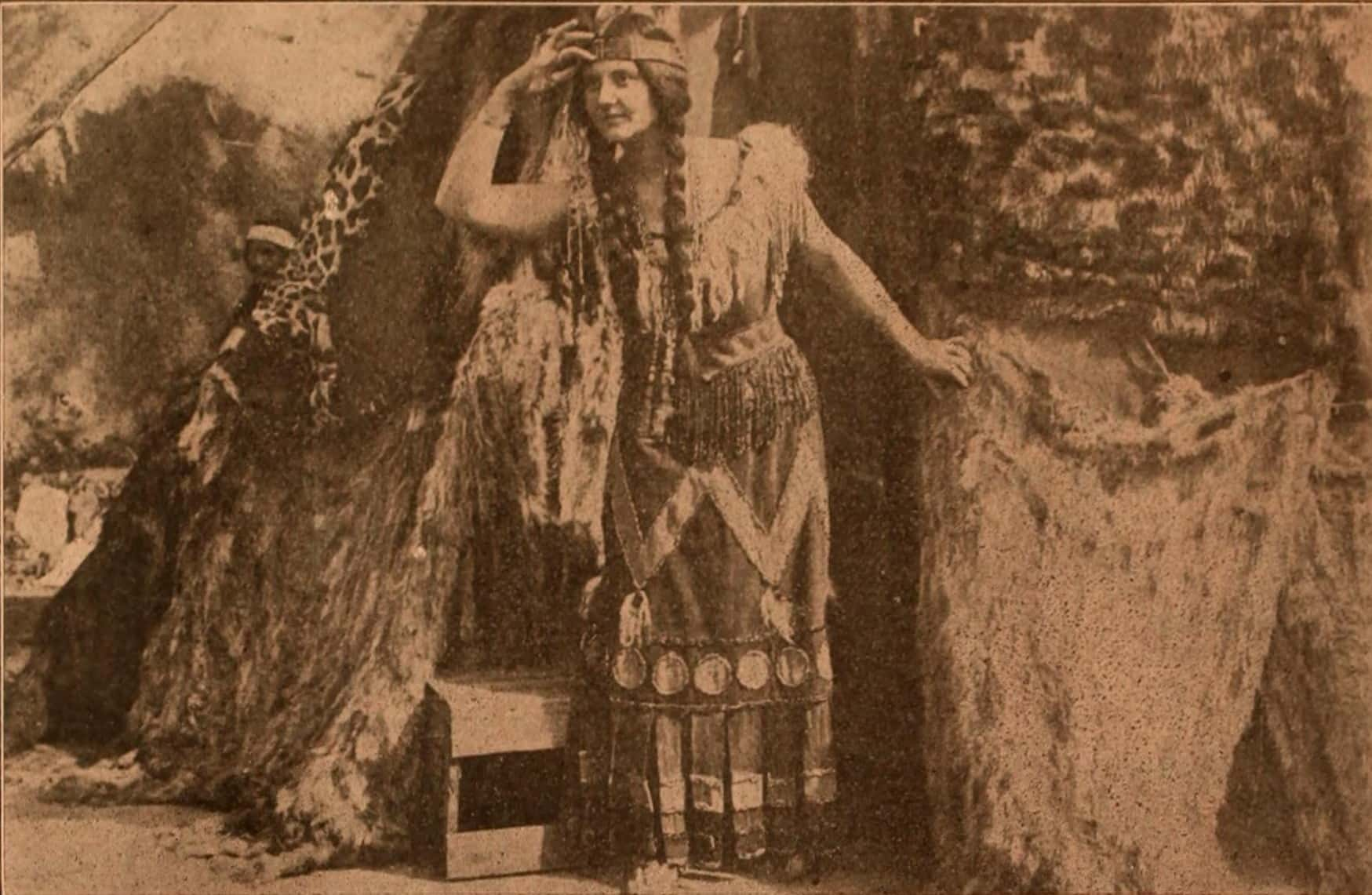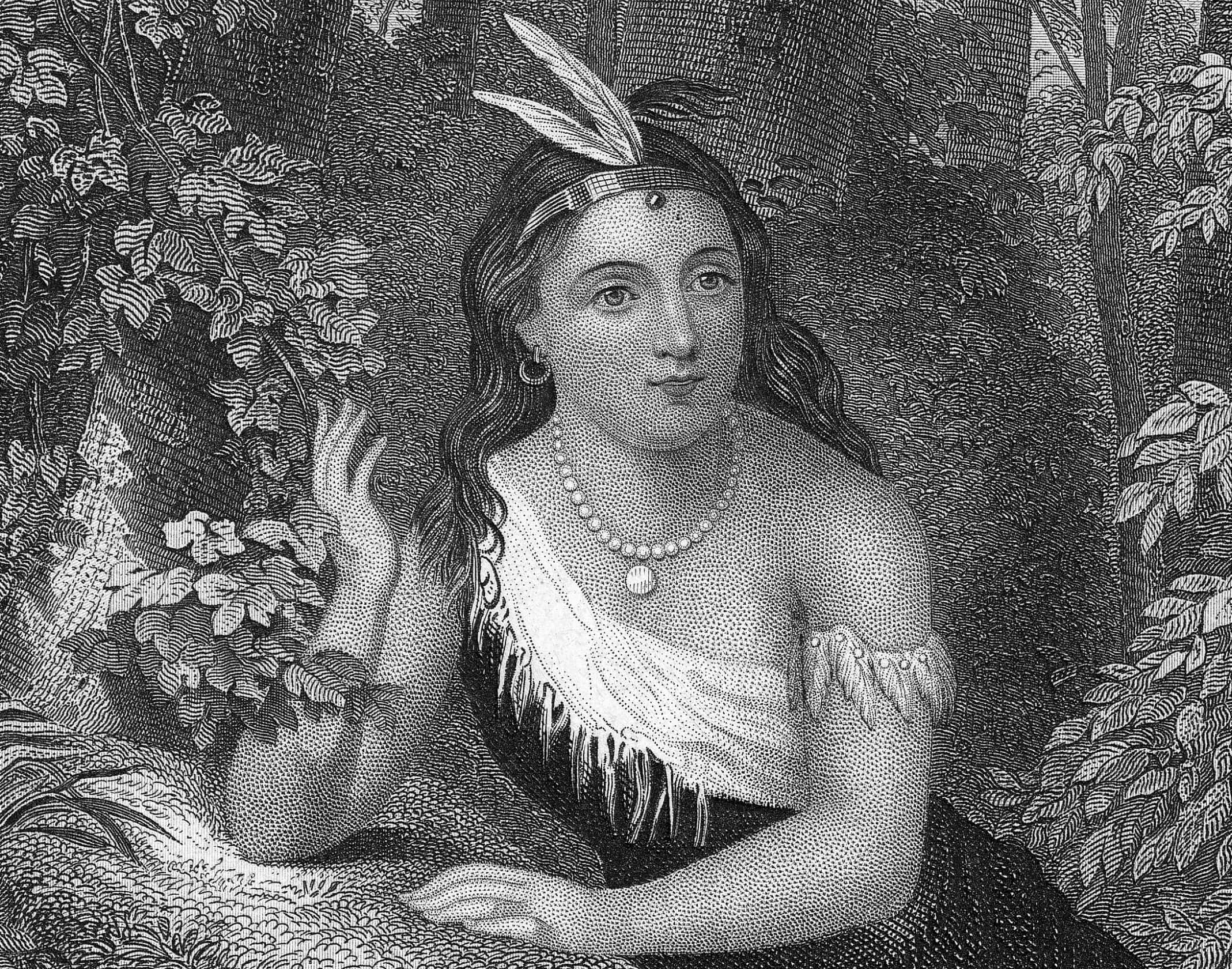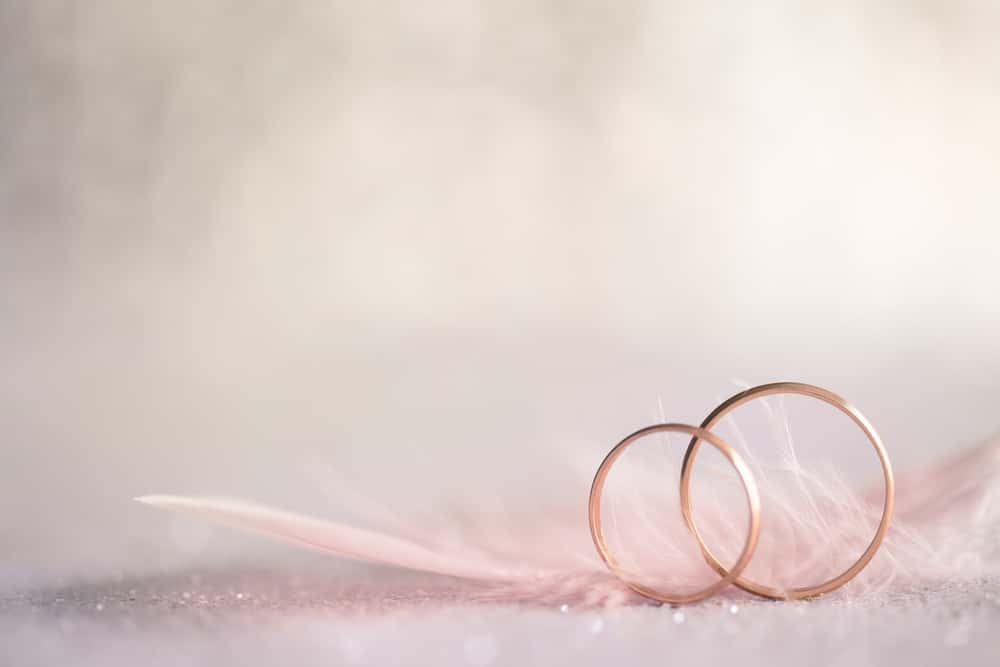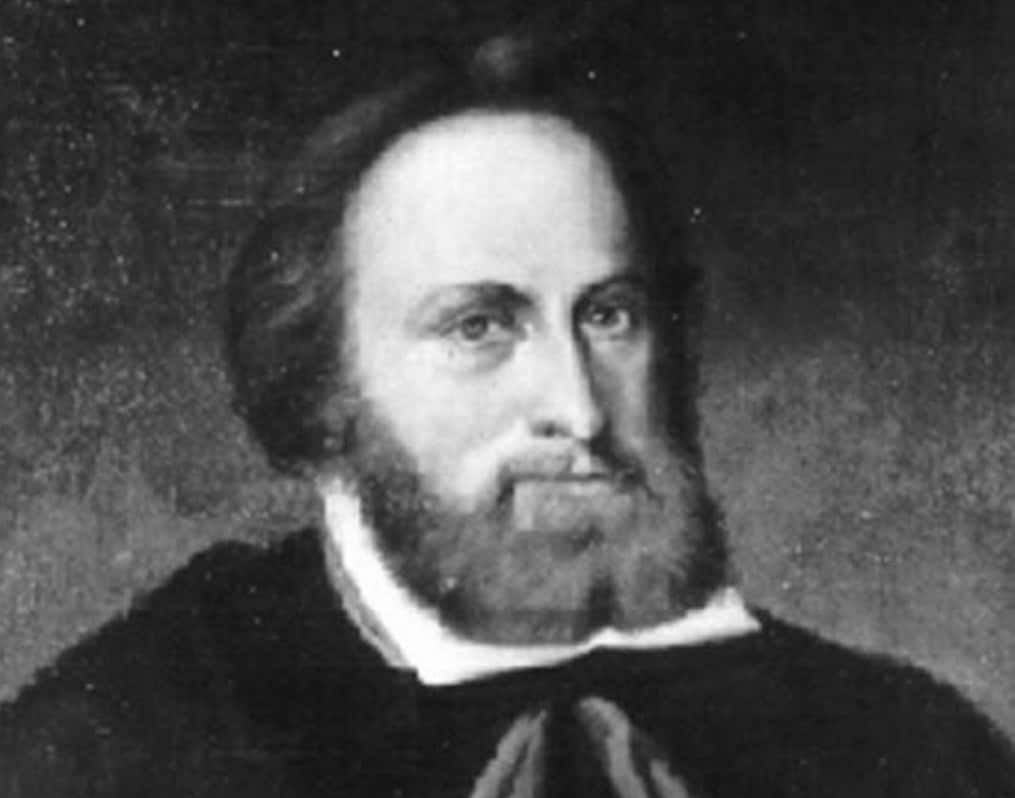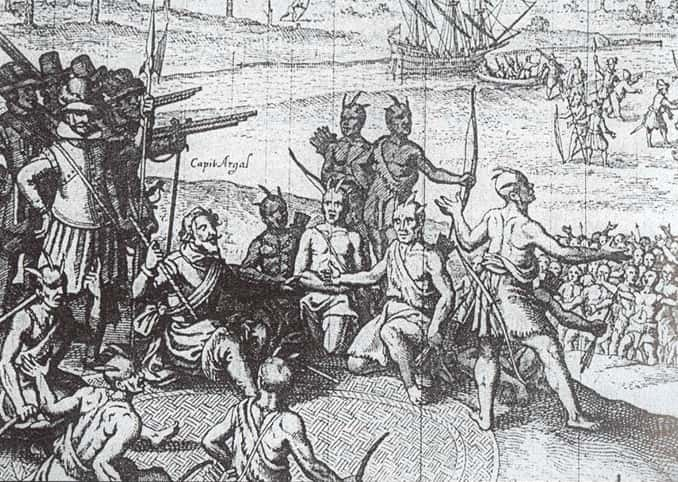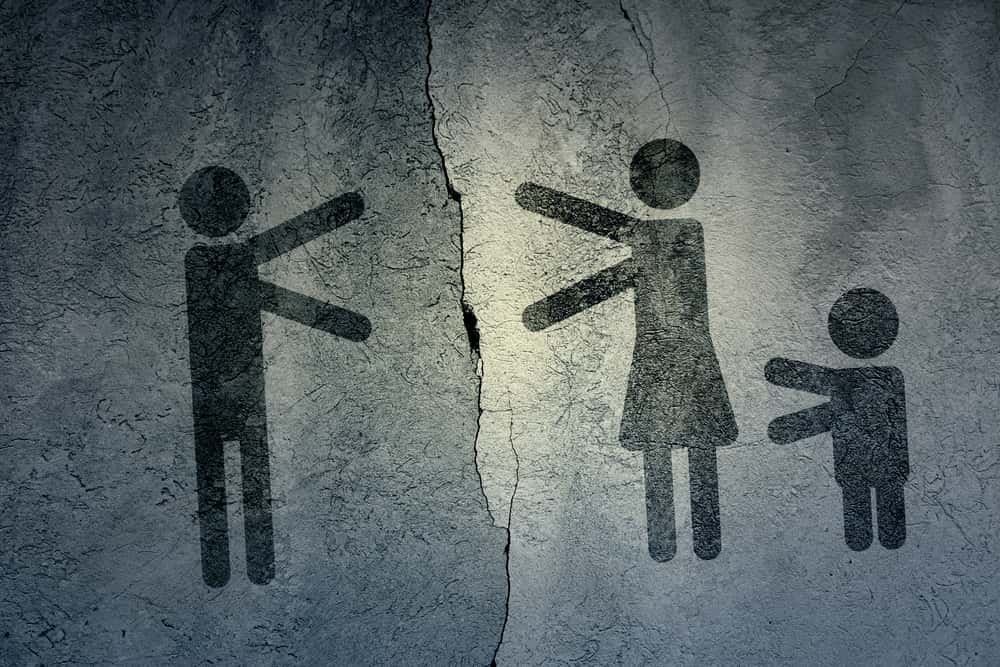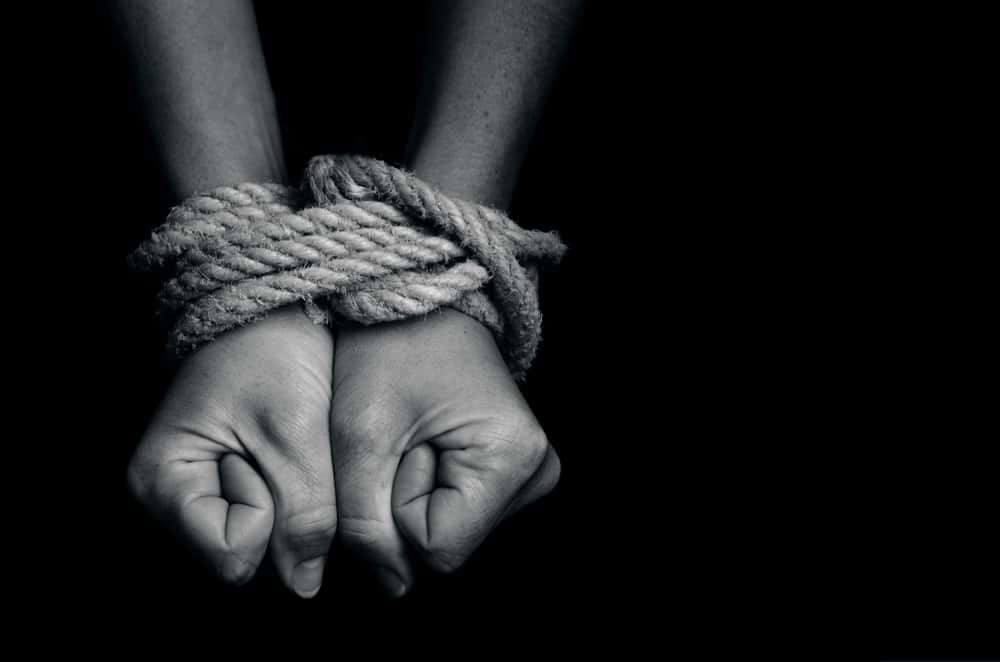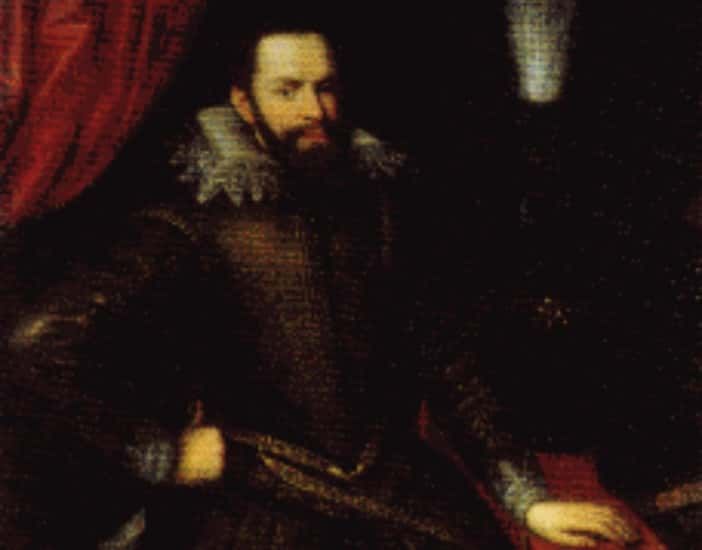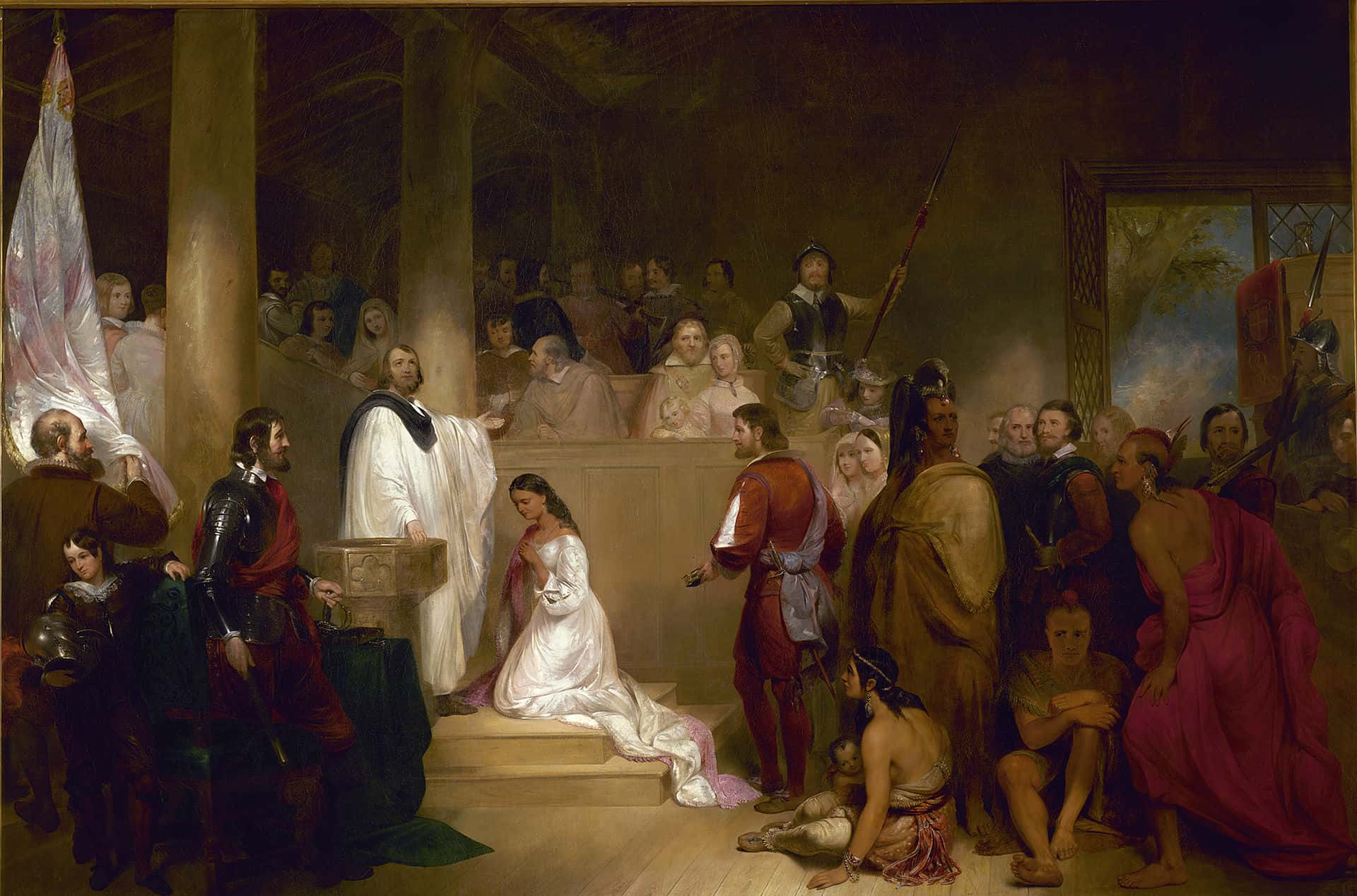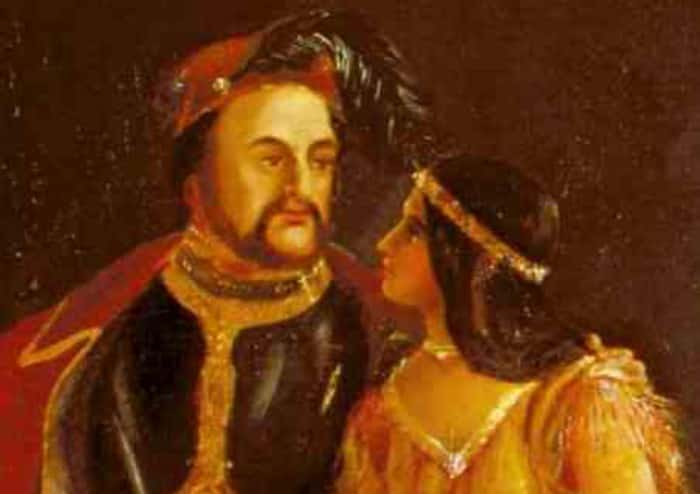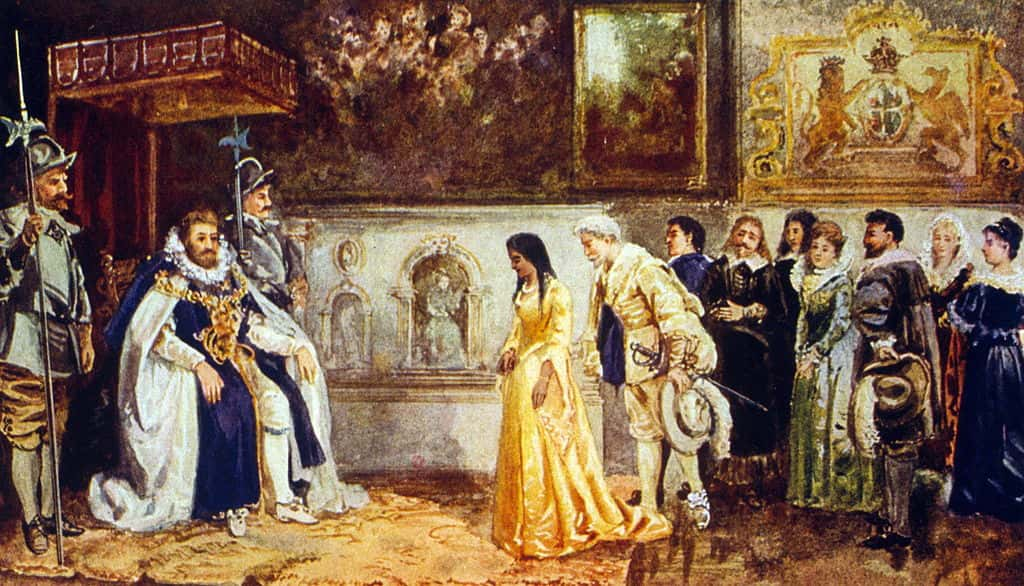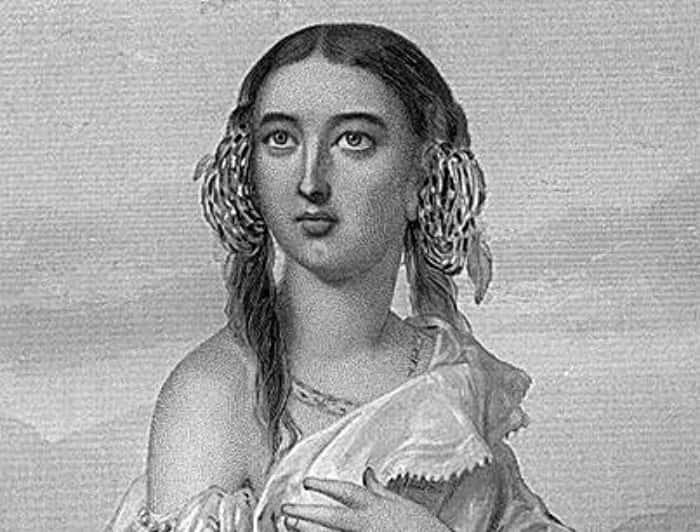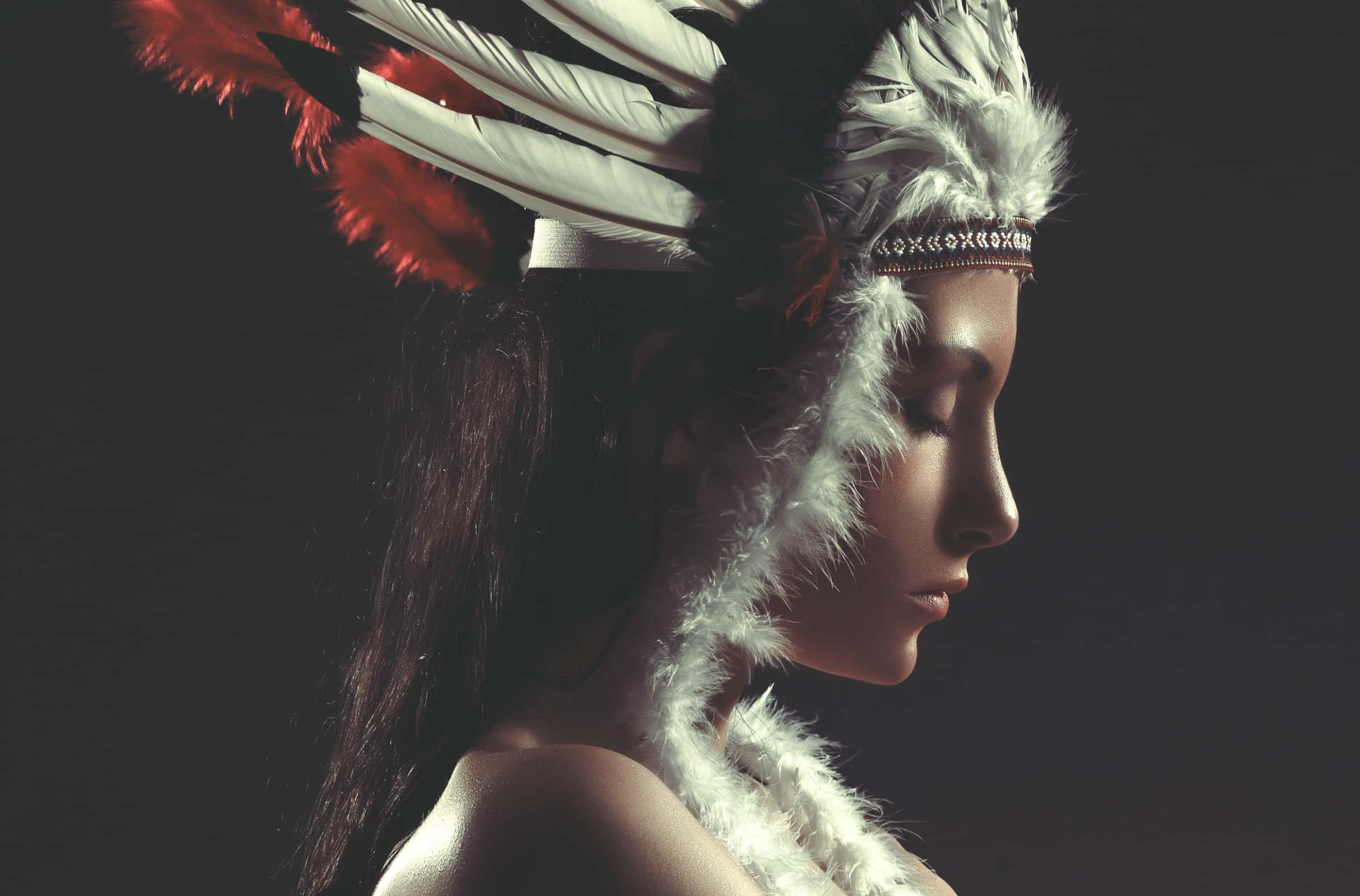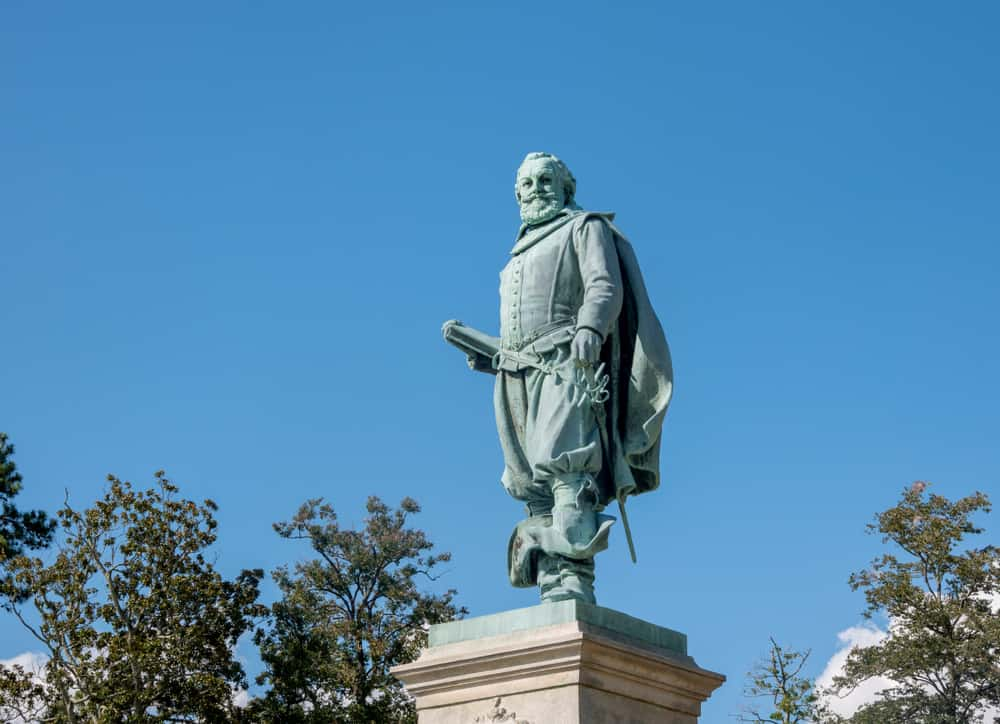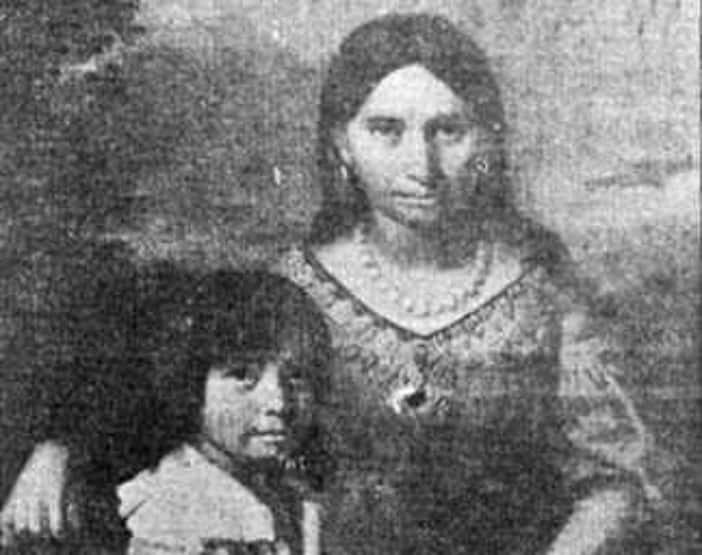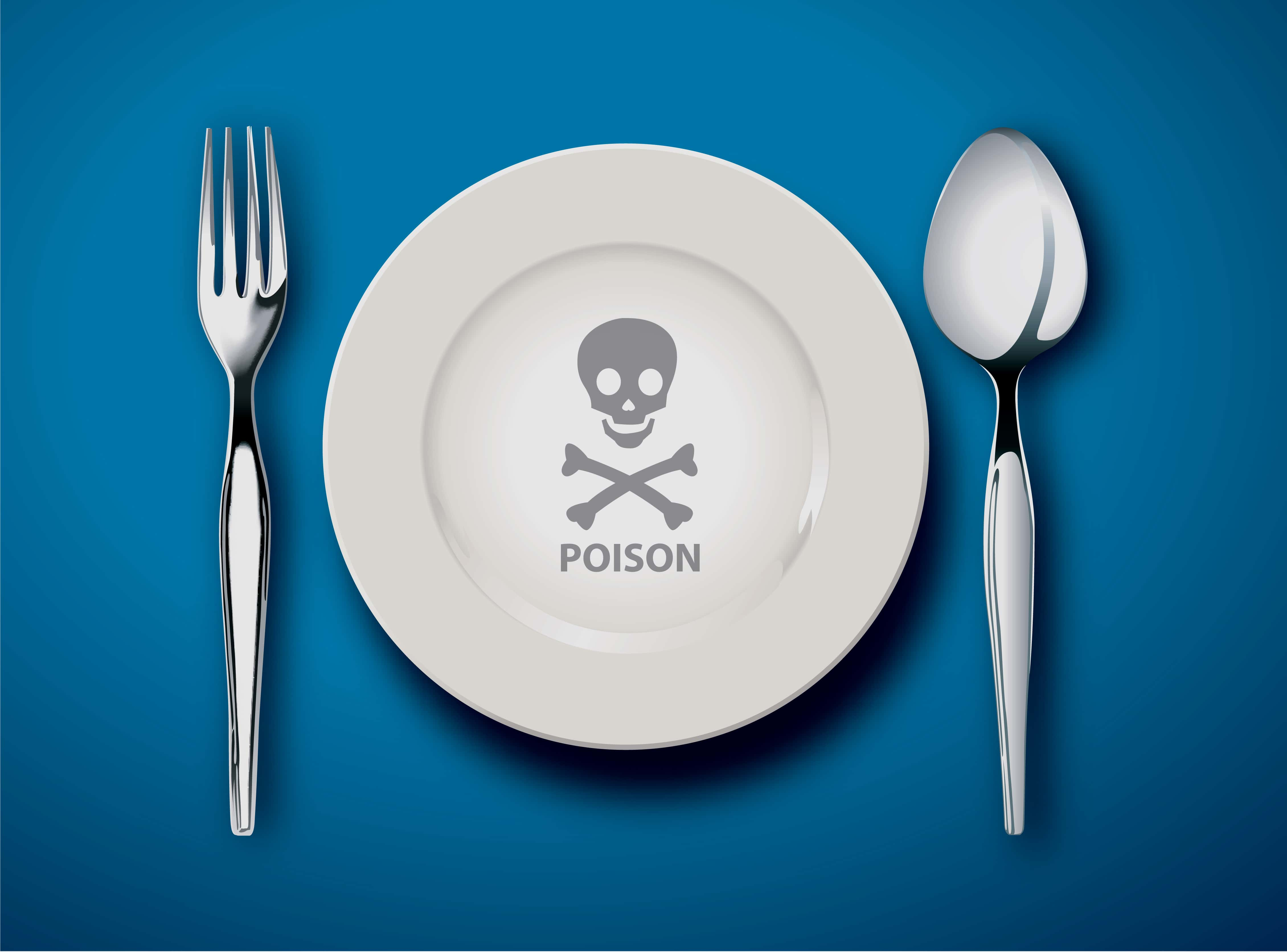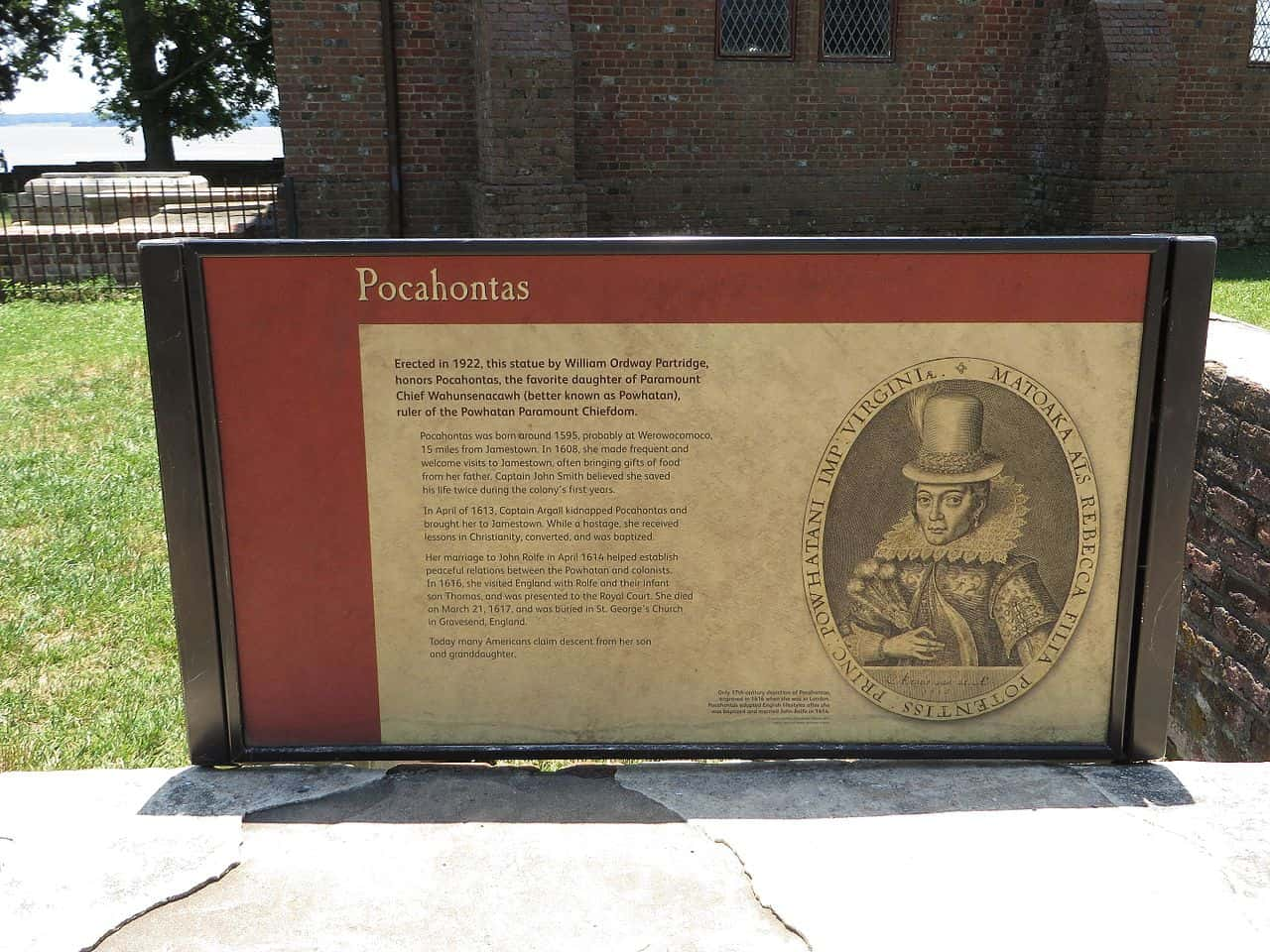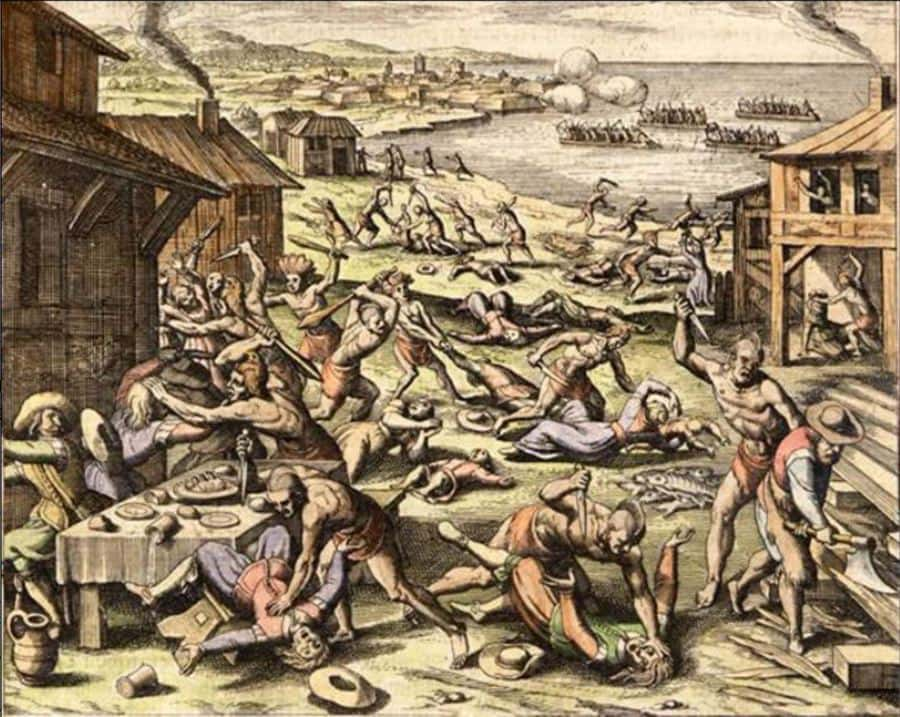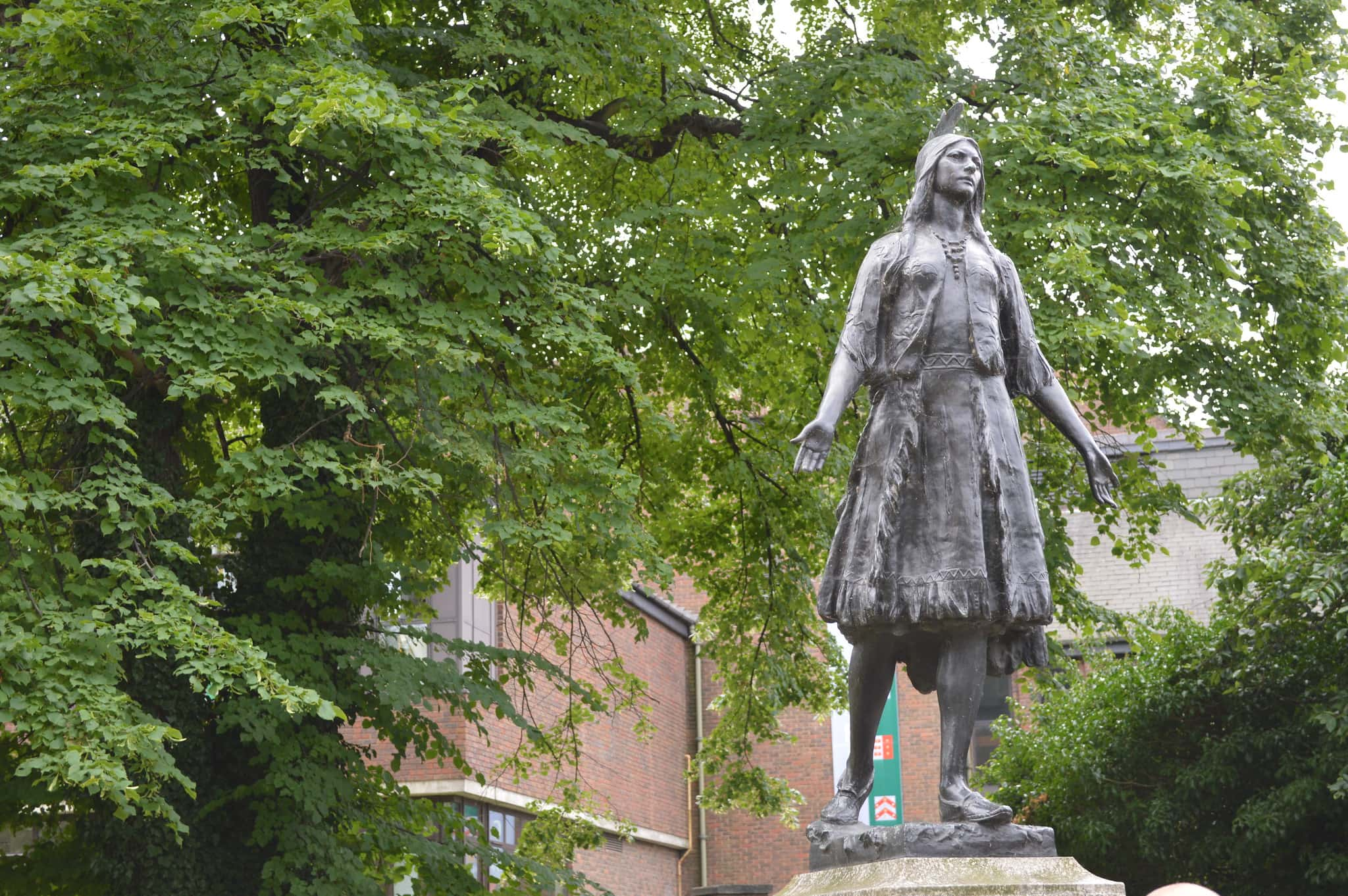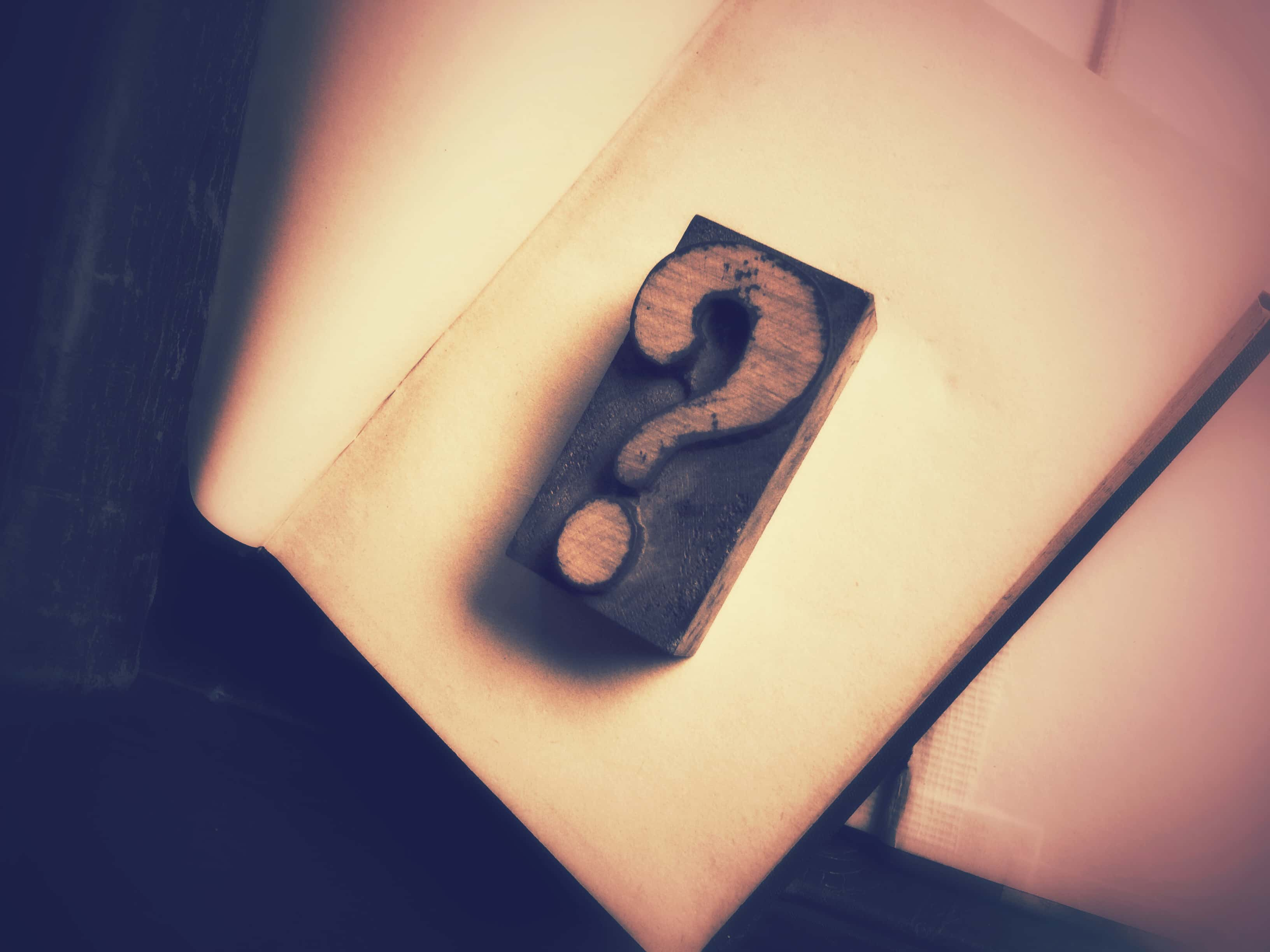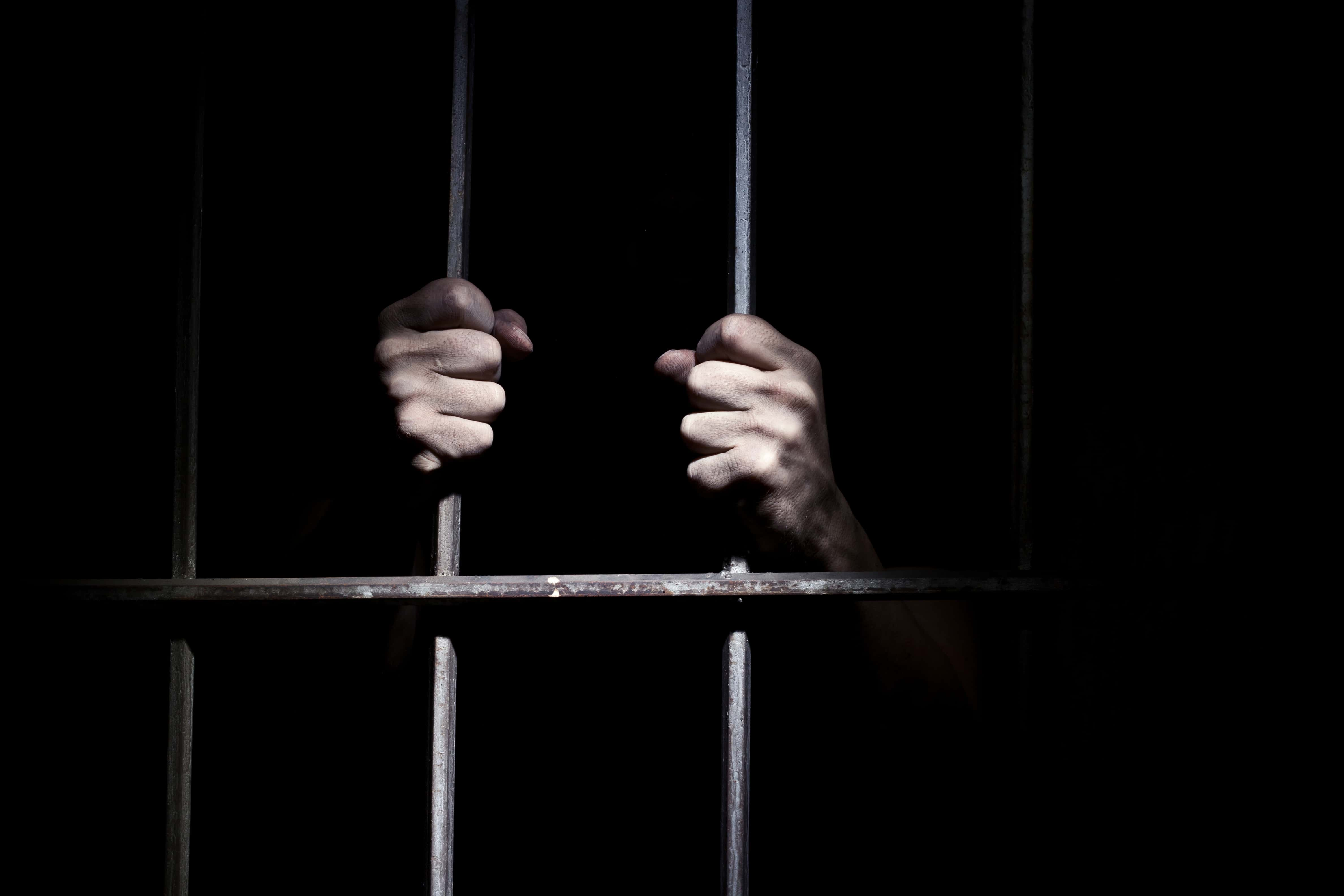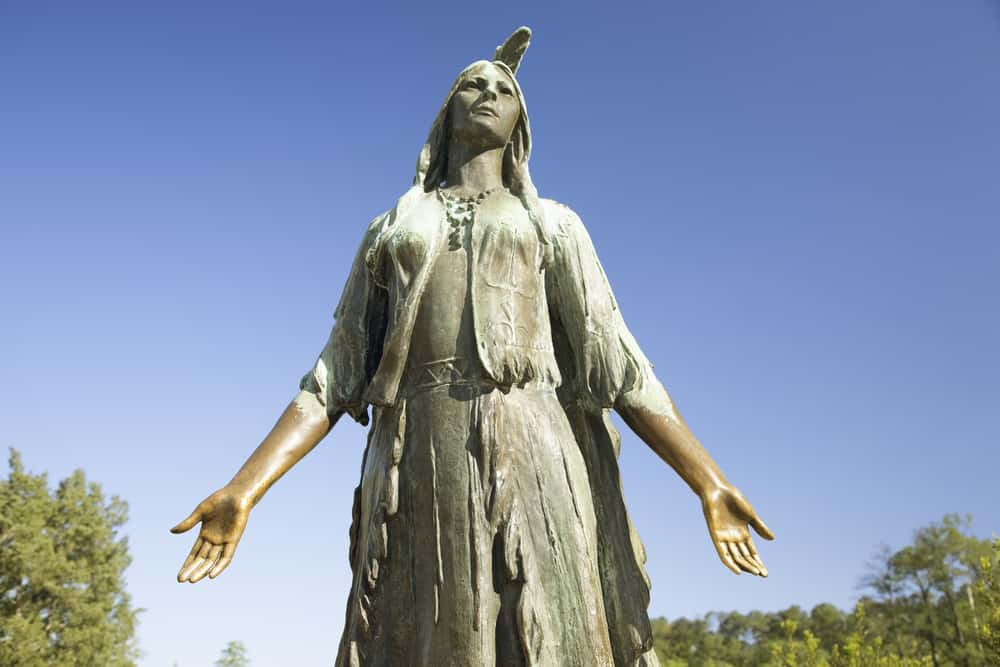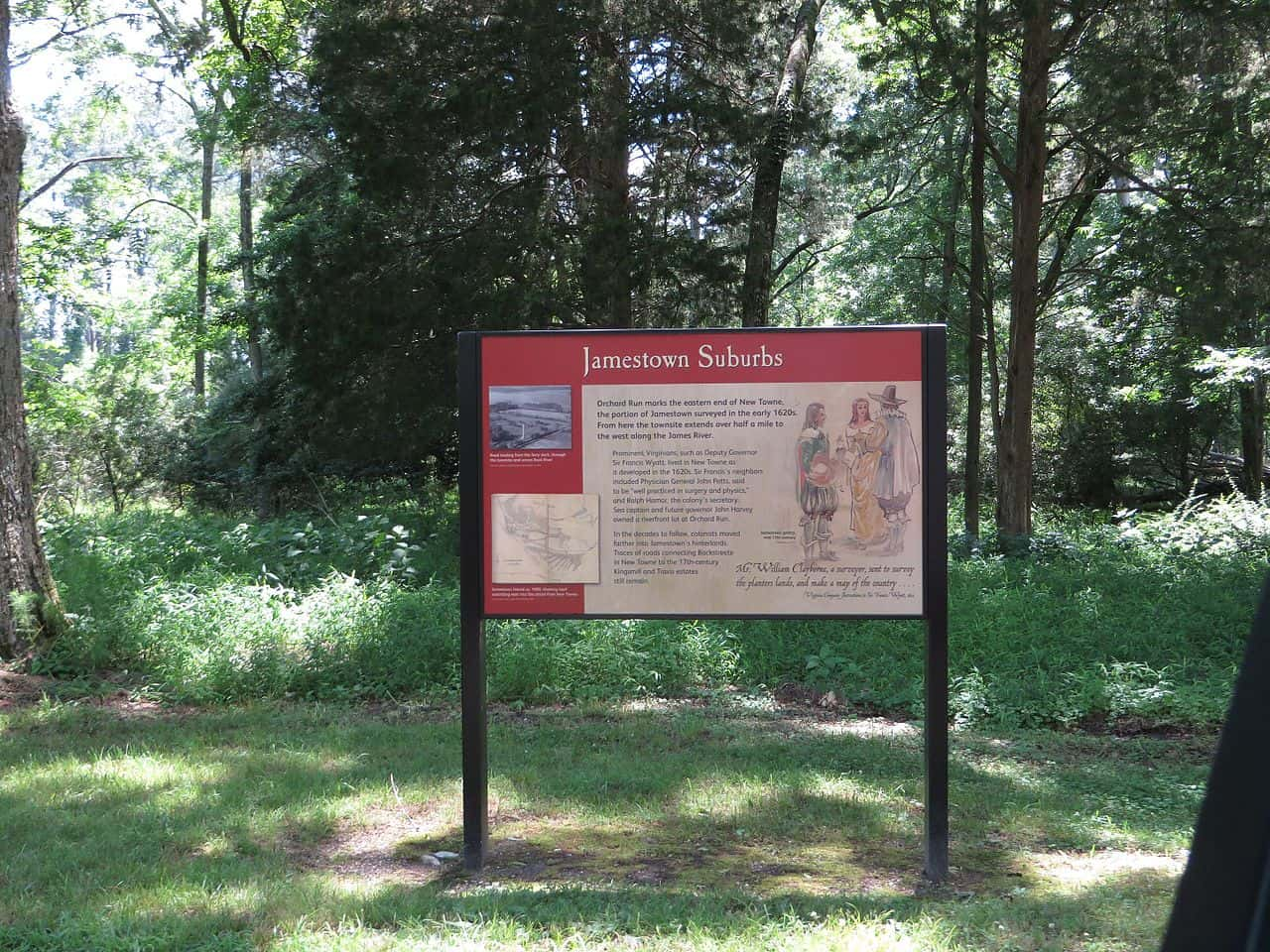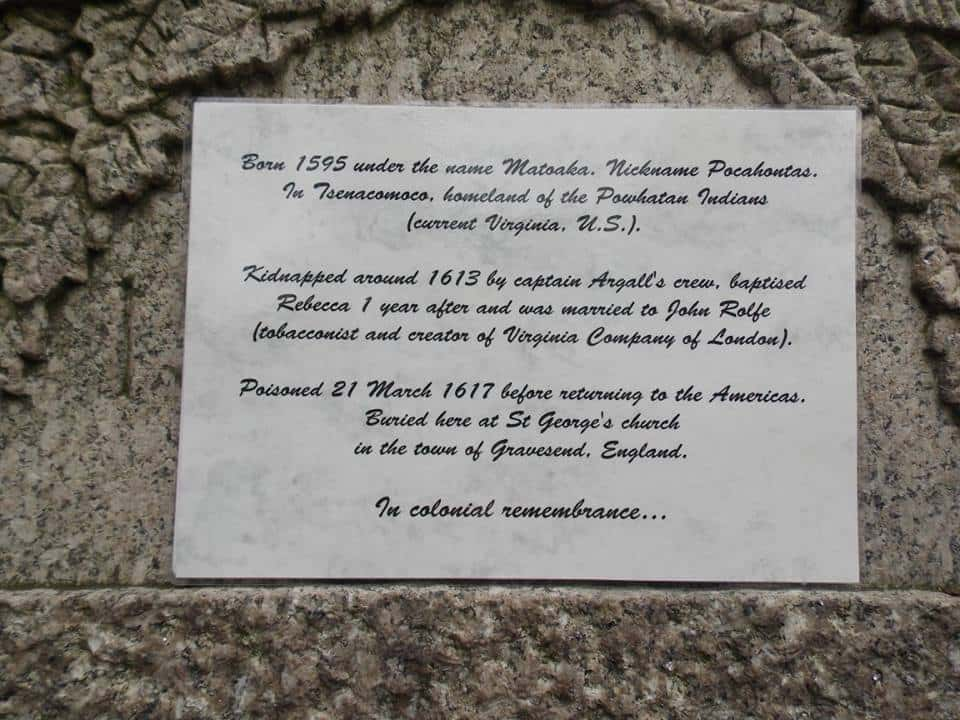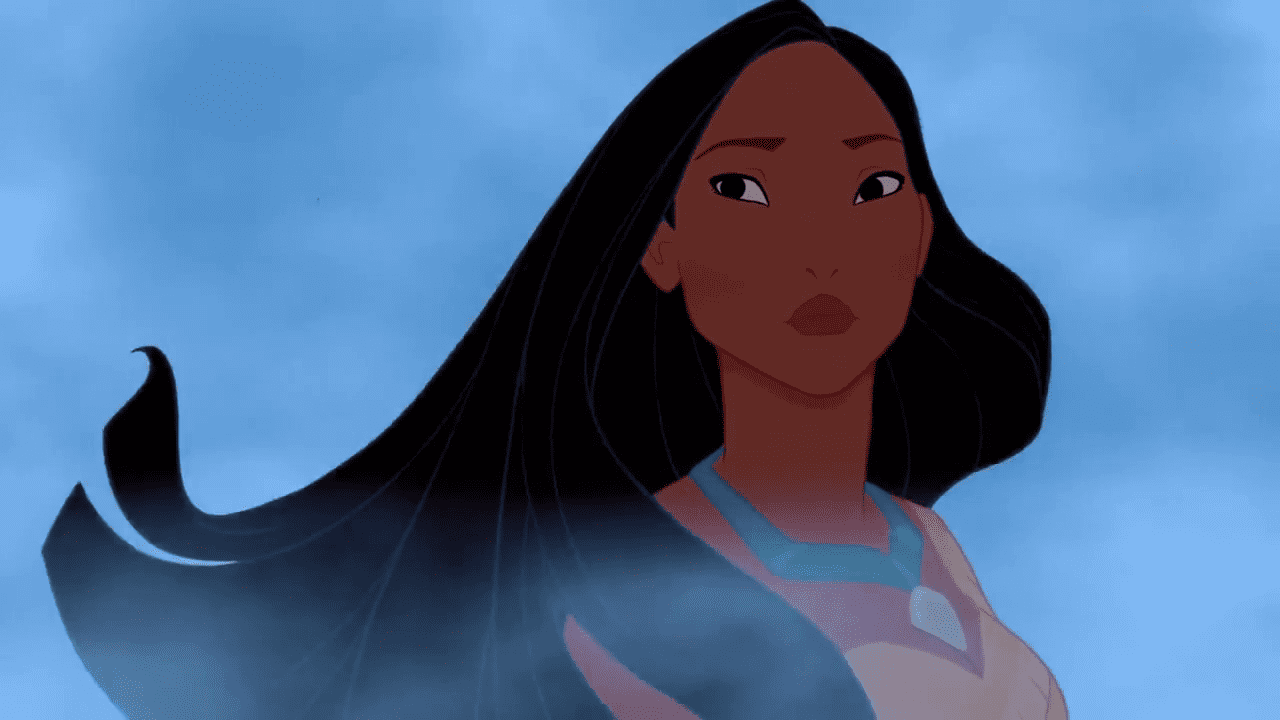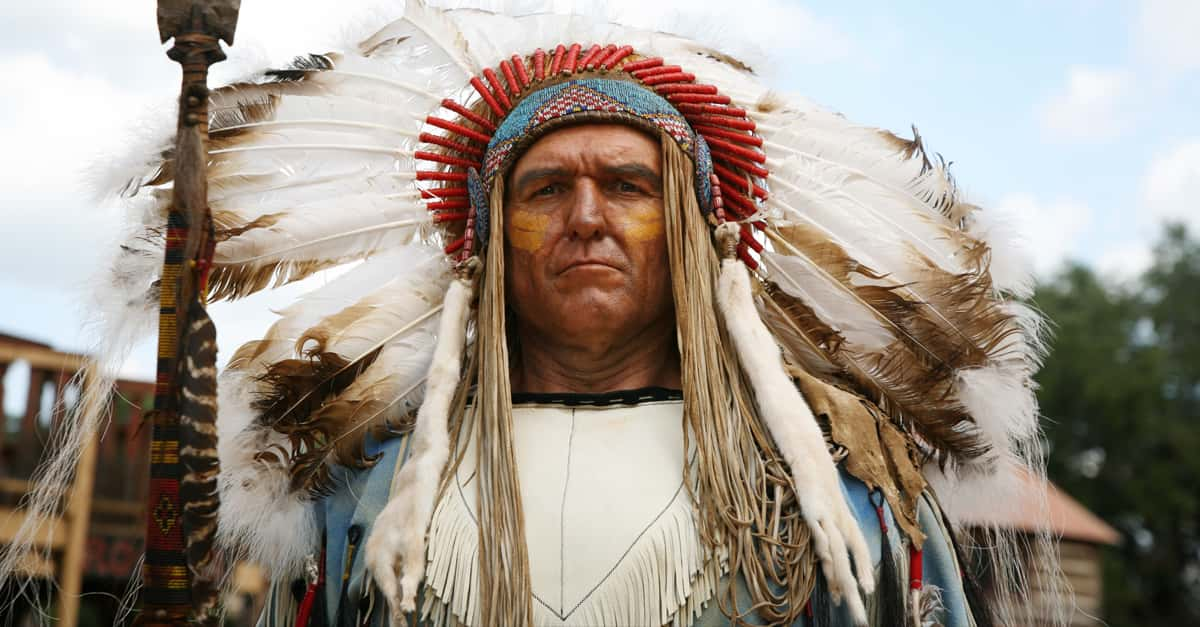Pocahontas is one of history's most fascinating women. She only lived until her 21st birthday, but she used her brief time on earth to make an extraordinary impact. As the daughter of a Powhatan chief, she befriended colonists like John Smith, endured a horrific kidnapping, sailed across the ocean, became an exotic "princess," and then, suddenly, perished under mysterious circumstances. It's time to recover her incredible life and her dramatic death. This is the story of Pocahontas, the Native American icon.
Pocahontas Facts
1. Her Name Has a Deeper Meaning
On the day of her birth in 1596, the woman we know as “Pocahontas” actually entered the world with an entirely different name. She was born as Matoaka, which means “flower between two streams" and referred to how Pocahontas was born between two rivers. Both her name and birth foreshadowed how she would be pulled between two cultures—colonist and Indigenous—for the rest of her life.
2. She Was Her Father’s Favorite
Pocahontas is often called a princess—but the truth is a little different. In real life, she was the favorite daughter of powerful Chief Powhatan, who oversaw a vast network of tribes in what is now modern-day Virginia. As the apple of her father’s eye, Pocahontas certainly lived like his little princess. She was his “delight and darling” and he loved to see her smile—but sadly, Powhatan’s love for his daughter may have had tragic roots.
3. Her Family Endured a Tragedy
According to Pocahontas’ descendants, the Mattaponi people, Pocahontas’s mother sadly perished while giving birth to her daughter. Chief Powhatan felt especially tender towards Pocahontas because she resembled her dearly departed mother.
4. She Was Spunky
Our heroine soon earned the nickname of Pocahontas, meaning “playful one” or “mischievous one.” While people disagree about a lot of things in Pocahontas’s life, everyone unites on this: Pocahontas was one spunky girl. She famously ran around without clothing at the Jamestown settlement, played with boys, and did cartwheels. However, there’s a darker story behind Pocahontas’s nickname.
5. Her People Tried to Protect Her
Some historians claim that Pocahontas adopted a nickname for a more chilling reason than mere playfulness. Instead, the Powhatan people believed that if the colonists knew Pocahontas’s real name, they would be able to harm her. Sadly, as we’ll see, that would happen even without the British calling her by her true name.
 Pocahontas: The Legend (1995), GoodTimes Entertainment
Pocahontas: The Legend (1995), GoodTimes Entertainment
6. The Settlers Arrived
Pocahontas had a happy childhood—but everything changed in the spring of 1607. On an April morning, 100 British colonists landed in Virginia. One of them was the famous John Smith, who is often depicted as Pocahontas’ tragic love. Smith and his fellow Englishmen struggled to survive in “The New World,” leading Smith to change gears. In December, he sailed the Chickahominy River, hoping to find people to trade with. Spoiler: He would find much more than that.
7. Her Father Held Smith Captive
After days on the strong river, John Smith began to explore the landscape—only to immediately become captured by Powhatan’s men. They held Smith as a captive and presented him to Pocahontas's father, the Chief. To Smith’s surprise, the Chief decided to keep him as a genteel prisoner, even welcoming the Englishman with an enormous feast. It’s at this point that Pocahontas and John Smith cross paths. Little did they know, their meeting would make history.
 Pocahontas: The Legend (1995), GoodTimes Entertainment
Pocahontas: The Legend (1995), GoodTimes Entertainment
8. Her “Great Romance” Isn't What You Think
Thanks to the Disney movie about Pocahontas, many people assume that John Smith and Pocahontas were star-crossed lovers. In real life, nothing could be further from the truth, and that's probably a good thing. After all, when they met, John Smith was in his late twenties while Pocahontas was just 10 years old. This is far from the only thing that the Disney movie, shall we say, embellished.
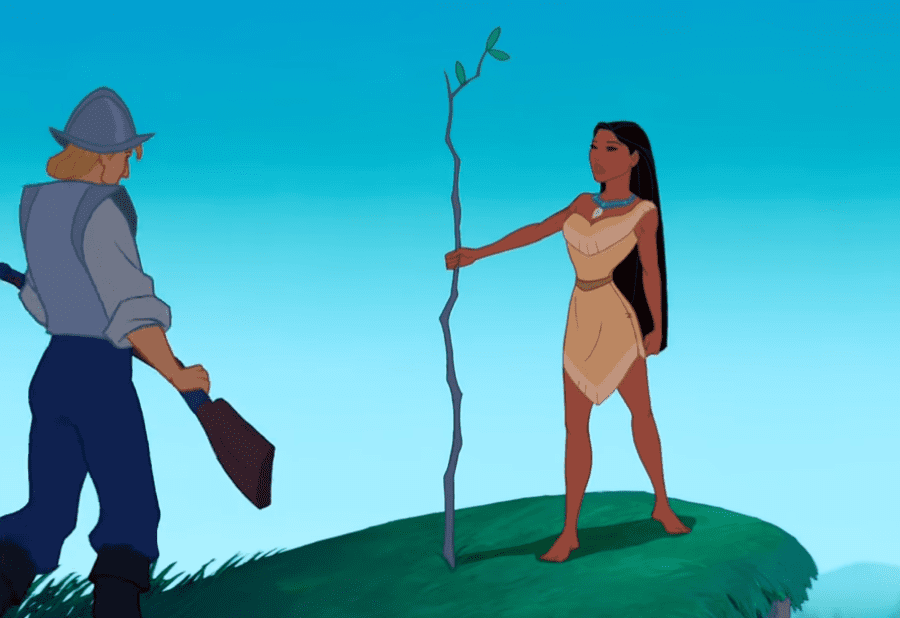 Pocahontas, Walt Disney Pictures
Pocahontas, Walt Disney Pictures
9. She Befriended a Settler
During John Smith’s time with Pocahontas’s people, the settler and the chief’s daughter became fast friends. They taught each other simple parts of their respective languages, with Smith transcribing Pocahontas’s Algonquian tongue and Pocahontas learning rudimentary English. But soon, according to Smith, the warm relationship between him and his captors changed for the worse.
 Pocahontas: The Legend (1995), GoodTimes Entertainment
Pocahontas: The Legend (1995), GoodTimes Entertainment

Sign up to our newsletter.
History’s most fascinating stories and darkest secrets, delivered to your inbox daily. Making distraction rewarding since 2017.
10. Her Father Tried To Destroy Her Friend
According to Smith, he endured a horrific ordeal at the hands of Pocahontas’ father, Chief Powhatan. The tribesmen dragged out two enormous stones, then used their collective strength to seize Smith and force him to place his head on one of the rocks. With Smith in this vulnerable position, the Powhatan people brandished their clubs and prepared to, in Smith’s words, “Beate out his braines”—until a stunning turn of events.
11. Pocahontas Leapt Into Action
Just as the Powhatan men were about to end Smith’s life, Pocahontas bravely entered the fray. She ran to protect Smith and when she couldn’t save him by pleading with her father, she valiantly put her life on the line. Pocahontas threw herself over John Smith’s body. If her father’s men wanted to harm Smith, they’d have to harm her too. With this valiant gesture, Pocahontas effectively saved Smith’s life—or did she?
12. Or Did She?
Plot twist: John Smith may have never been in danger at all. Instead of trying to harm him, the Powhatans were trying to give him a compliment! The so-called execution may have been part of a tribal ceremony to welcome Smith into the community. When Pocahontas protected Smith, she may have just been going along with her role as Smith's sponsor. And that’s not even the most jaw-dropping part of this saga.
13. Her Father Had a Secret Plan
According to the historian Margaret Huber, Powhatan had more up his sleeve than a simple “Welcome To The Tribe!” party. Instead, by bestowing an honorary position upon Smith, Chief Powhatan was playing the long game. With Smith as his ally, he could keep the British settlers under his control. This was the beginning of a long and bloody series of conflicts between the two groups.
14. A Brutal Conflict Began
In early 1608, there was a tense peace between the Powhatan and the settlers—but by April, everything changed. During the spring, one of the men from the Virginia Company made a dubious trade. Chief Powhatan gave him a turkey...in exchange for swords. Yeah, Powhatan got the better end of that deal—and he wanted more where those swords came from. However, John Smith had other ideas. Both men dug in their heels and began the conflict that would define Pocahontas’s life.
15. Her People Were Taken Captive
Furious that they couldn’t trade for more swords, Powhatan’s men began to sneak into Jamestown and run off with the colony’s shovels, axes, pistols, and basically any dangerous metal tool they could find. No surprise, this ticked off John Smith and his friends. The British settlers struck back with a vicious gesture: They claimed seven Powhatan men as their captives. With this, the long-simmering conflict was finally reaching its breaking point.
16. Pocahontas Tried to Keep the Peace
When there’s tension in your settler-First Nations communications, Pocahontas was your girl. She entered the fray as a peacemaker. Pocahontas expertly negotiated between her father and John Smith. In the end, she managed to make the men back down and even got Smith to let the Powhatan captives come back home. However, the peace was incredibly brittle, and by the fall of 1608, the conflict reignited.
 Pocahontas: The Legend (1995), GoodTimes Entertainment
Pocahontas: The Legend (1995), GoodTimes Entertainment
17. Her Father Knew the Truth
After a brief period of peace, the dangerous feud between the settlers and the Powhatan tribe got underway—and for good reason. Chief Powhatan saw more and more settlers entering his traditional territories and began to suspect that these colonists weren’t as accommodating as they seemed. As he later told John Smith, “your comming hither is not for trade, but to invade my people, and possesse my Country." Unfortunately, he was right.
18. The Chief Changed the Game
The settlers tried to quell Powhatan’s fears by staging a fake coronation ceremony—but Powhatan was no dummy. He saw through their ruse—if anything, it confirmed that the British were intent on deceiving him. As the leaves turned colors in 1608, Powhatan made his move: He officially cut off all trade with the British. This was his trump card: By denying trades, Powhatan was effectively telling the British that they could try to survive the vicious winter on their own. It was a vicious move—and the British responded with an even harsher act.
19. Her Life Changed Overnight
By January of 1609, the settlers realized that they couldn’t survive without assistance from the Powhatan. Instead of negotiating, though, they gave the Chief a cold-blooded ultimatum. When Smith met up with Chief Powhatan, he effectively told him, “You trade with us, or we declare all-out war.” Shocker: This was not what Powhatan wanted to hear. From there, things devolved even further—and this conflict would have a terrifying impact on the course of Pocahontas’s life.
 Pocahontas: The Legend (1995), GoodTimes Entertainment
Pocahontas: The Legend (1995), GoodTimes Entertainment
20. Her Father Struck Back
When Chief Powhatan heard what the Virginia Company was planning to do, he struck back with two actions: one defensive, one offensive. First, he ordered his family to get out of the now-dangerous territory, sending Pocahontas and her siblings to a town 50 miles away from the British. Second, based on the tides, Chief Powhatan knew the settlers wouldn’t be able to sail back to their fortress. Realizing that his enemies would be captive on his lands for another night, Powhatan decided to shoot his shot. He sent some of his men to take out Smith and his compatriots. However, the attack did not go to plan.
21. Pocahontas Defied Her Family
This is when a wild card entered the fray. It turns out that Pocahontas had not travelled to a faraway town. Instead, she secretly stayed near her village and overheard her father’s plan to destroy the British. Cue one of Pocahontas’ most famous acts: The young girl travelled to Jamestown to warn John Smith and his British comrades about her father’s impending attack.
22. She Saved the British
Pocahontas wept as she revealed her father’s plot and urged the settlers to flee if they wanted to stay alive. Though Smith tried to give Pocahontas gifts to thank her for her moonlit warning, Pocahontas declined, saying that if her father saw the items, he would discover her betrayal and punish her. After a tearful goodbye, Pocahontas ran back to her people. With her help, John Smith and his men got away before Powhatan came for them. It’s a thrilling story—but there's more to it than meets the eye.
 Pocahontas: The Legend (1995), GoodTimes Entertainment
Pocahontas: The Legend (1995), GoodTimes Entertainment
23. There Are Unanswered Questions
According to Pocahontas’ descendants, the Mattaponi people, the idea of Pocahontas saving the British leaves us with more questions than answers. As the chief’s favorite child, Pocahontas would have been guarded carefully by her elders. Could she have really snuck by her father’s men and travelled to the British? Not everyone is convinced. But even if Pocahontas saved John Smith this time, she wouldn't always be around to help him..
24. Her Friend Had a Terrifying Accident
In 1609, Smith had a terrifying accident. While in his boat, a packet of gunpowder erupted, wounding Smith so grievously that he had no choice but to return to England and try to recover. The blast ripped one of his legs to shreds, effectively skinning his limb. As he sailed away, he thought he’d never see Pocahontas again. He was wrong. But before they reunited, Pocahontas would endure the most brutal decade of her life.
25. The Settlers Lied to Her
For some cruel reason, Smith’s fellow Britons decided not to tell Pocahontas that her friend was injured and on his way to recover back home. Instead, they heartlessly betrayed her. They walked up to the girl who supposedly saved them and told her that John Smith was six feet under. Along with Chief Powhatan’s hatred for the British, this supposed "loss" led Pocahontas to stop visiting Jamestown. Instead, she began spending time with a different man: The handsome warrior Kocoum.
 Pocahontas, Walt Disney Pictures
Pocahontas, Walt Disney Pictures
26. She Became a Young Bride
When Pocahontas was 14 years old, she wed a man named Kocoum from the nearby Patawamake tribe. According to Kocoum’s descendants, the couple had a daughter named Ka-Okee or, in some versions, a son named Young Kocoum. Sadly, the baby wouldn’t grow up knowing either of their parents. After Pocahontas and Kocoum had been married for three years, disaster struck.
27. The Settlers Plotted Against Her
While Pocahontas and Kocoum were enjoying their newlywed years, Chief Powhatan’s trade ban was wreaking havoc on the British. And to make matters worse, he kept taking their men captive and destroying their supplies with surprise attacks. Desperate and ticked, the British desperately wanted a way to get back at Powhatan. They got it—and unfortunately for Pocahontas, she played a major part in their devious plan.
 Pocahontas: The Legend (1995), GoodTimes Entertainment
Pocahontas: The Legend (1995), GoodTimes Entertainment
28. She Was Held For Ransom
When John Smith’s replacement, the vicious Samuel Argall, heard that Powhatan’s beloved daughter lived at a local tribe, he came up with a monstrous plan. He decided to pay her a visit...and casually make her his captive. The plan was to hold Pocahontas ransom—if Chief Powhatan wanted his daughter back, he’d need to give Argall the British men he’d abducted. It was a simple plan, but it could not have gone worse.
29. She Was a Prisoner
When Argall took Pocahontas away, he told her new tribe, the Patawamake, that he’d bring her back soon. Shocker, Argall lied in a big way. When the British presented their deal to Chief Powhatan, negotiations broke down almost immediately. In this tense time of uncertainty, one thing was for sure: Pocahontas was not going home any time soon—or in fact, ever.
30. The Settlers Destroyed Her Family
Sadly, Pocahontas would never see her husband or her baby again. At the same time as Pocahontas walked on board Argall’s British vessel and began her return to the Jamestown settlement, Argall's men heartlessly killed Pocahontas's husband Kocoum. Pocahontas's baby survived only because the infant had already been given to local tribeswomen.
31. Her Experiences Are Mysterious
British sources claim that during her year in captivity, the settlers treated Pocahontas courteously. After all, harassing Pocahontas wouldn’t help end the stalemate with Chief Powhatan. With his strong tribal connections, Powhatan had numbers on his side, so it would be smart for the British not to antagonize the powerful chief even further. However, not everyone agrees on this point. According to Mattaponi oral history, Pocahontas’s experiences with the British were utterly horrific.
32. She Underwent a Terrible Trauma
Historians agree that unfortunately, it was not uncommon for settlers to sexually assault First Nations women. Tragically, Pocahontas may have suffered a similar fate. First Nations sources insist that multiple Englishmen assaulted young Pocahontas. When they were sated, they cruelly taunted her, saying her father wasn’t agreeing to their trade because he didn’t love her and wasn’t interested in getting her back.
To an already traumatized young woman, these comments stung, but they hurt even more when Pocahontas realized they had a basis in truth.
 Pocahontas, Walt Disney Pictures
Pocahontas, Walt Disney Pictures
33. Her Father Wouldn’t Pay the Ransom
You see, when Powhatan learned that the British had his daughter, he freed the English men that he'd been holding captive. However, he wouldn’t bend to all the settlers demands—specifically refusing to let go of his arms supplies (perhaps reasonably figuring he’d need them if things kept going the way they were going). As tensions rose, so did the body count.
 Pocahontas: The Legend (1995), GoodTimes Entertainment
Pocahontas: The Legend (1995), GoodTimes Entertainment
34. The Chief Lashed Out
When ransom “negotiations” reached their breaking point, Powhatan’s men attacked Jamestown, so the settlers planned to respond with a cruel taunt. They would parade Pocahontas in front of her father and make the young woman negotiate between the two sides. However, this plan failed from the get-go. Pocahontas was in no condition to foster diplomacy. Over her time as a captive, she had descended into complete despair.
 Pocahontas: The Legend (1995), GoodTimes Entertainment
Pocahontas: The Legend (1995), GoodTimes Entertainment
35. Pocahontas Fell Into Despair
First Nations sources say that during Pocahontas’s months with the British, she became incredibly depressed. Over time, she refused to eat and almost went mute. Her captors, knowing that Pocahontas needed to be alive for their plan to work, became so nervous about her plummeting health that they let her older sister, Mattachanna, visit and raise Pocahontas’s spirits. Mattachanna comforted her sister—but even she couldn’t pull Pocahontas out of her depression.
 Pocahontas, Walt Disney Pictures
Pocahontas, Walt Disney Pictures
36. She Turned Her Back on Her People
Perhaps this context helps explain Pocahontas’s shocking actions in March of 1614. When Argall and the governor of Jamestown ordered Pocahontas to negotiate with her father, she refused. Instead, there was a jaw-dropping twist: Pocahontas chose to stay with the British. One source quotes Pocahontas as saying that after her long captivity, she no longer believed her father loved her. Heartbroken, she opted to stay with her captors. But according to Mattaponi oral histories, Pocahontas’s sadness came from more than her father’s refusal to pay her ransom.
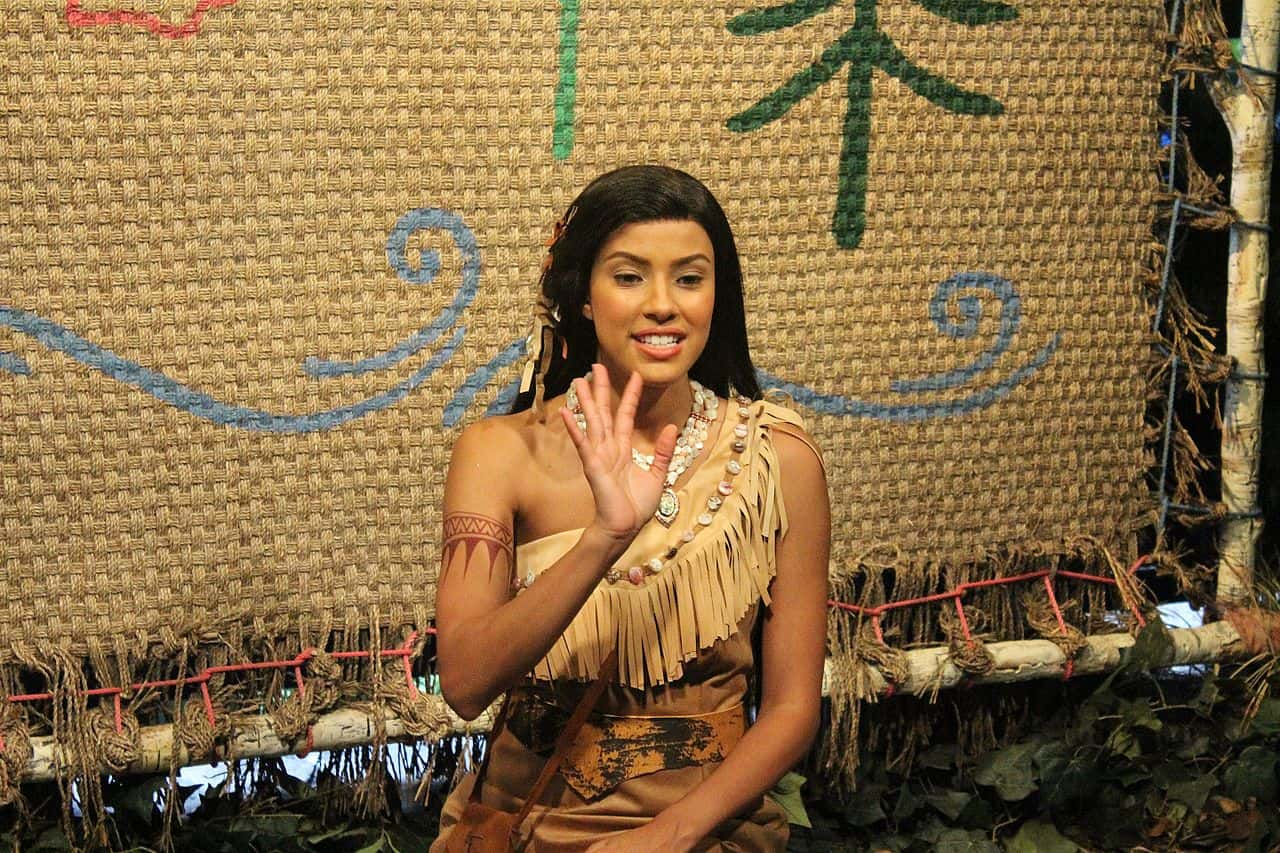 Wikimedia Commons, Theme Park Tourist
Wikimedia Commons, Theme Park Tourist
37. She May Have Had a Secret Child
Because of one of the British assaults against Pocahontas, the young woman was now pregnant. In this version of Pocahontas’s sad story, she bears a son, Thomas, out of wedlock. Mattaponi historians believe that the father was Sir Thomas Dale, the governor of Jamestown.
38. She Converted
Towards the end of her time as a captive, Pocahontas converted to Christianity. Some say she did so of her own free will; other sources insist that sadly, she was forced. Either way, Pocahontas received the sacrament of baptism and took on a new name as a sign of her commitment to her new faith: Lady Rebecca. With this done, she did something even more surprising: She married a settler.
39. She Married an Englishman
In the British version of Pocahontas’s story, she was not assaulted and she certainly didn’t have the governor’s secret baby. Instead, in April 1614, a newly Christian Pocahontas married the settler John Rolfe. Their wedding marked the beginning of “The Peace of Pocahontas”, eight calm years where the British and the Powhatans didn’t fight one another. However, for all the good it produced, there was a heartbreaking twist to Pocahontas’s new marriage.
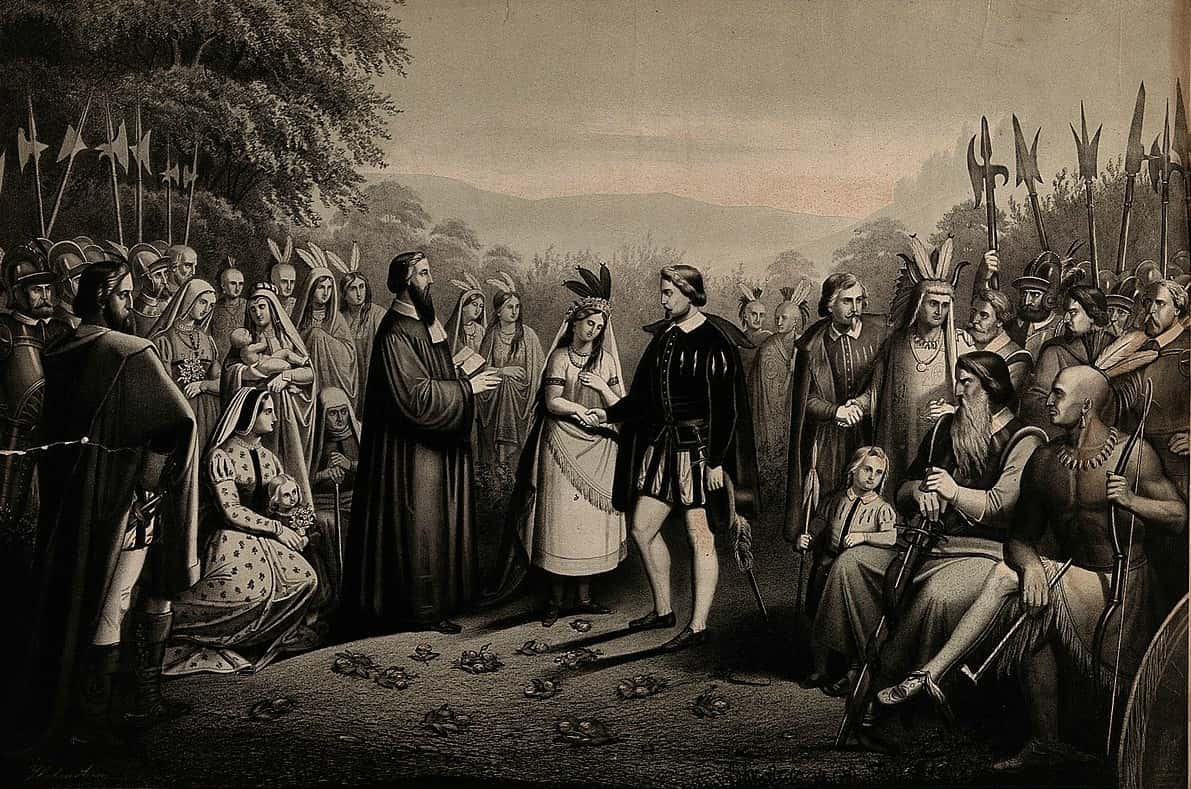 Wikimedia Commons, Wellcome Images
Wikimedia Commons, Wellcome Images
40. Her Wedding Was Heartbreaking
Sadly, Chief Powhatan didn’t attend his own beloved daughter’s wedding. Still suspicious of the British (fair!), he thought they might try to assault him or take him captive at the ceremony. Instead, the Chief sent Pocahontas a beautiful pearl necklace in his stead. Touchingly, in a famous portrait of Pocahontas, she wears the strand of pearls with pride. By that point, the pearls were all Pocahontas had to remember her father by. After her wedding to Rolfe, Pocahontas never saw her father again.
41. Her Marriage Had Tragic Roots
According to English sources, Pocahontas and Rolfe had a stable relationship. After all, they didn’t exactly marry because of an overpowering passion. In Rolfe’s letters, he said that he wed Pocahontas for the “good of the community” and so that he could save the young Native woman with Christianity. Pocahontas had even sadder reasons for walking down the aisle. Marrying Rolfe meant she could finally live out of captivity. Whichever way you slice it, their marriage was a somber event—and for Pocahontas, life remained difficult.
42. She Voyaged to England
In the summer of 1616, Pocahontas entered the final phase of her short but eventful life. At that time, the Virginia Company decided to bring her and her family to England, pitching the trip as an exciting journey. And parts of it certainly were: While overseas, Pocahontas met the King and Queen of England, attended a play, and, because the British pitched her as a Princess, received the royal treatment. But behind all this pomp, the Virginia Company hid their true motivations.
43. The British Used Her
Pocahontas’s whirlwind tour through England wasn’t just for fun. The Virginia Company was effectively using her and her cross-cultural marriage as propaganda that would make their activities in America look good. Plus, according to one historian, Pocahontas’s race meant that she wasn’t really treated like a visiting royal. Instead, she was more like a “curiosity” or, to be blunt, a freak.
44. She Had a Shocking Reunion
After the Virginia Company paraded Pocahontas around England, she settled down in villages like Brentford and Heacham with her husband and baby. Her life was quiet at this time, but while attending a local get-together in 1617, Pocahontas encountered a face from her past: John Smith. Her reaction to seeing her friend, who she thought had perished, was heartbreaking.
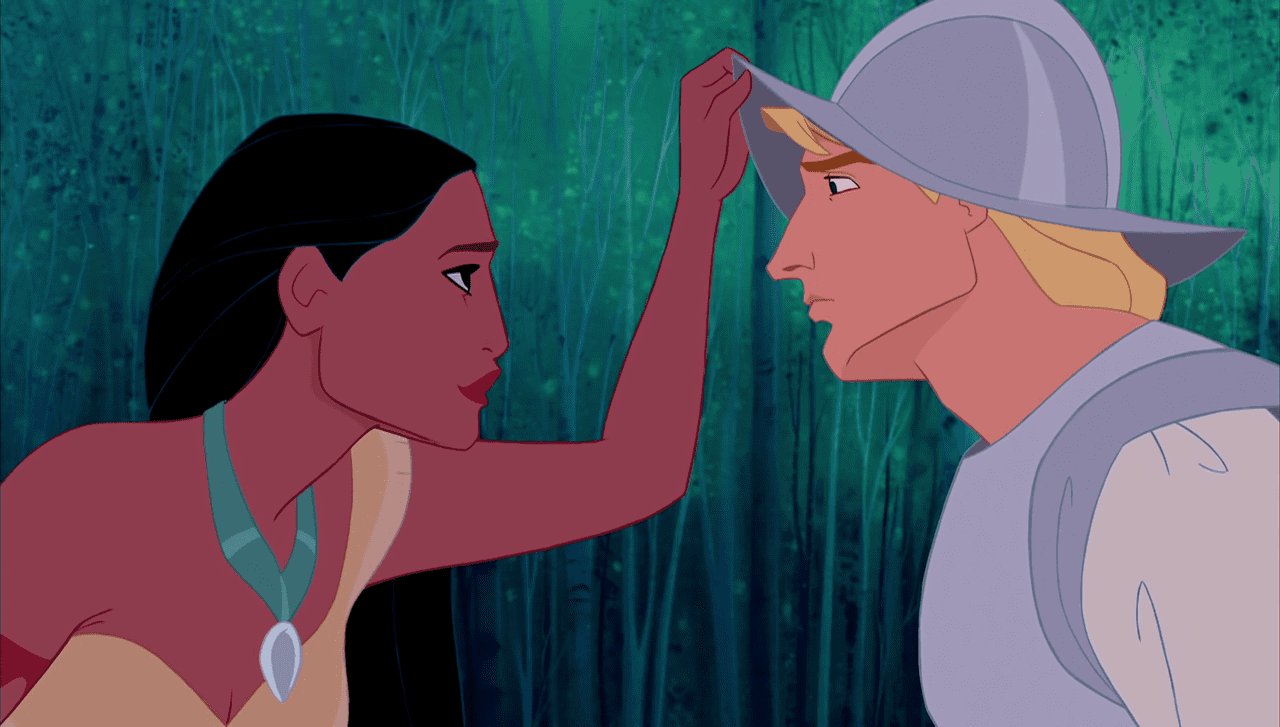 Wikipedia, The Walt Disney Company
Wikipedia, The Walt Disney Company
45. She Shamed Her Old Friend
When Pocahontas saw John Smith, she became so distressed that she went silent and needed to be alone for a long period of time. Once she gathered her courage, Pocahontas confronted her old friend. She said that she had treated him well, and the settlers had promised to share with the Powhatan people. Instead, their words were lies. The British did little more than cause Chief Powhatan and his tribe to live in fear. Then she delivered her final blow.
46. She Was Furious
In past decades, historians believed that the fiery confrontation between Pocahontas and John Smith meant that Pocahontas was still secretly in love with her old friend. However, the actual content of the conversation is never about romance. It's about betrayal. When Pocahontas had the chance to tell John Smith how she felt, her words don't seem very smitten. If anything, she seems furious.
47. She Put John Smith In His Place
As her final retort to John Smith, Pocahontas revealed that her father never believed he was truly dead. By the time the British told him that Smith had perished, Chief Powhatan had learned not to trust their words. It’s safe to say that Pocahontas had the last word in that confrontation—but her victory would be short lived. She didn’t know it, but her time on earth was nearly over.
48. Her Health Began to Fail
Shortly after her tense reunion with John Smith, Pocahontas began to feel unwell. When she and her husband began their journey back to America, her illness only got worse. The ship frantically docked at Gravesend so that Rolfe could get Pocahontas on land and find a doctor to help his wife. Sadly, Rolfe's actions were in vain. No one could save Pocahontas.
 Pocahontas: Dove of Peace (2016), CBN
Pocahontas: Dove of Peace (2016), CBN
49. She Breathed Her Last
Pocahontas perished in March of 1617, at just 21 years of age. According to her husband Rolfe, in Pocahontas’s last moments, she took comfort in her beloved son Thomas. Her last words were, “all must die, but tis enough that her child liveth.” With this final sentence, Pocahontas passed on. However, with her demise, a new mystery began to take hold.
50. Her Final Days Are Mysterious
To this day, no one knows exactly what caused Pocahontas’s demise. Most British sources claim that she became ill with a fatal case of ether tuberculosis or pneumonia. However, Mattaponi oral histories insist on a darker version of events. Pocahontas’s sister Mattachanna was present when she passed and according to her, Pocahontas became violently ill immediately after having dinner. Mattachanna believed that Pocahontas wasn’t sick—she was poisoned.
51. No One Knows Her Resting Place
Pocahontas was buried very far from home. Her remains lie somewhere in Gravesend, England, though no one knows exactly where. The funeral was not well documented, and while people believe that Pocahontas rests under a particular church, a fire destroyed the building in 1727. Her final resting place remains a mystery, like so much of Pocahontas’s brief life.
However, even though Pocahontas was gone, her demise had enormous consequences overseas.
52. Her Father Was Distraught
When Chief Powhatan heard that his beloved daughter Pocahontas had breathed her last, he felt utterly destroyed. Perhaps as a consequence of his immeasurable grief, just a year later, he perished too. With his demise, the already-tense relationship between the settlers and the Powhatan people started to devolve even further. In 1622, the conflict reached fever pitch in the infamous Jamestown Massacre. Once of the victims was none other than Pocahontas’s own widower, John Rolfe.
53. Her Legacy Is Vexed
And so, what do we make of Pocahontas’s life? Depending on who you ask, Pocahontas is a traitor, a hero, a victim, or something else entirely. For some First Nations people, her actions led the colonists to victory. For certain Americans, Pocahontas is a folk hero who helped found the United States. These disagreements are enormous and very hard to parse. But there is one dark fact that we do know for sure...
54. Her Ally May Have Lied
We have to view at least one source on Pocahontas’s life with great suspicion—and unfortunately for historians, the person accused of fabricating history is a major player in Pocahontas’s life: John Smith. Scholars are now saying that Smith may not have been the all-American folk hero that he so vigorously made himself out to be.
55. John Smith Had a Secret Side
John Smith’s writings are a crucial text from the colonial period. However, there’s one problem with these documents: They’re not exactly beholden to the truth. Smith’s story changes hugely over time. In letters from his year with the Powhatans, Smith doesn’t say anything about Pocahontas saving his life by heroically throwing herself over him. But over a decade later, when he’s back in England without anyone to refute his story, he suddenly says that he lived out a real-life romance-adventure. Why did he change his tune? The answer is darker than you might think.
56. His Words Are Doubted
Scholars believe that Smith’s memoirs weren’t meant to be cut-and-dry history, but a sensational way for him to boost his ruined reputation. You see, over the years, he’d fallen down a dark path. Smith was charged with mutiny and imprisoned by his own people, leading him to go from the Virginia Company’s golden boy to their black sheep. But if Smith wrote a book that cast himself as a tragic hero and brave adventurer, suddenly he looked a lot better. Was his “historical” account just a big PR campaign? Well, there’s more evidence to suggest that might be the case.
57. Pocahontas’s Heroism is More Complicated Than We Knew
One of the most famous stories about Pocahontas sees her heroically save the settlers by bringing them much-needed food in the cold months of the 1608 winter. Her generosity saved many lives, with John Smith writing that without her, they would have starved. However, like so much of Smith's memoirs, this story may be more romance than reality.
58. Elements Don't Make Sense
First, this is another one of those events that isn't in Smith's original letters and only pops up years later in his memoirs. Second, Jamestown and Pocahontas’s village were 12 miles and many bodies of water apart from one another. The idea of an 11-year-old girl braving such a long journey without her family knowing? Depending on who you ask, it’s just not plausible.
59. Traces of Her Exist in Unlikely Places
Here's one final note on John Smith's writings. Historians do believe one part of his story: The famous confrontation between himself and Pocahontas in England. The tone of this episode is much grittier than the extravagant stories in the rest of Smith's book. Also, importantly, this interaction took place in a crowded room with plenty of witnesses. As a sign that this element was true, no one contested Smith's version of events. Perhaps this one episode provides a rare peek at the true Pocahontas.
60. She Has a Lasting Legacy
As we've seen, Pocahontas’s life is one of most hotly contested parts of American and First Nations history. But no matter which version compels you, everyone can agree that Pocahontas certainly made her mark on the world. She was one of Disney’s first princesses of color, with the company basing the 1995 movie Pocahontas on a romanticized version of her life.
Over time, Disney has been far from the only studio to bring Pocahontas's story to the silver screen. Nine movies, including Terrence Malick’s The New World, tell her tale, often prioritizing English sources over Mattaponi oral histories. In this article, we’ve tried to show both sides of her complex life story.


